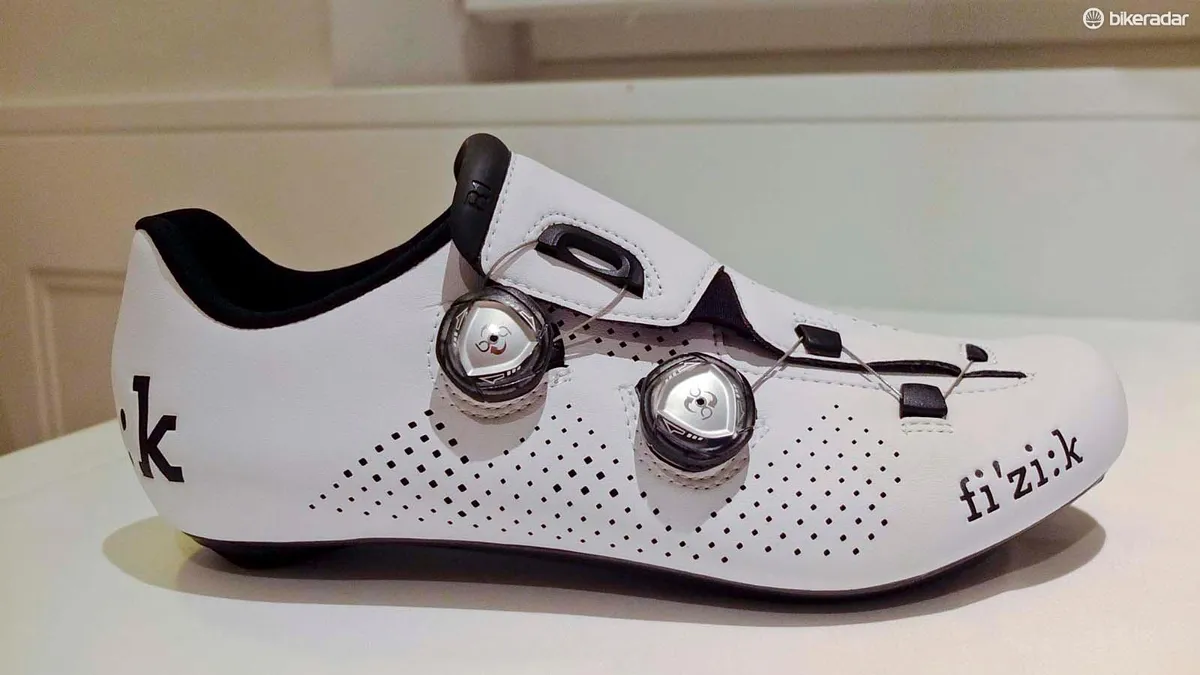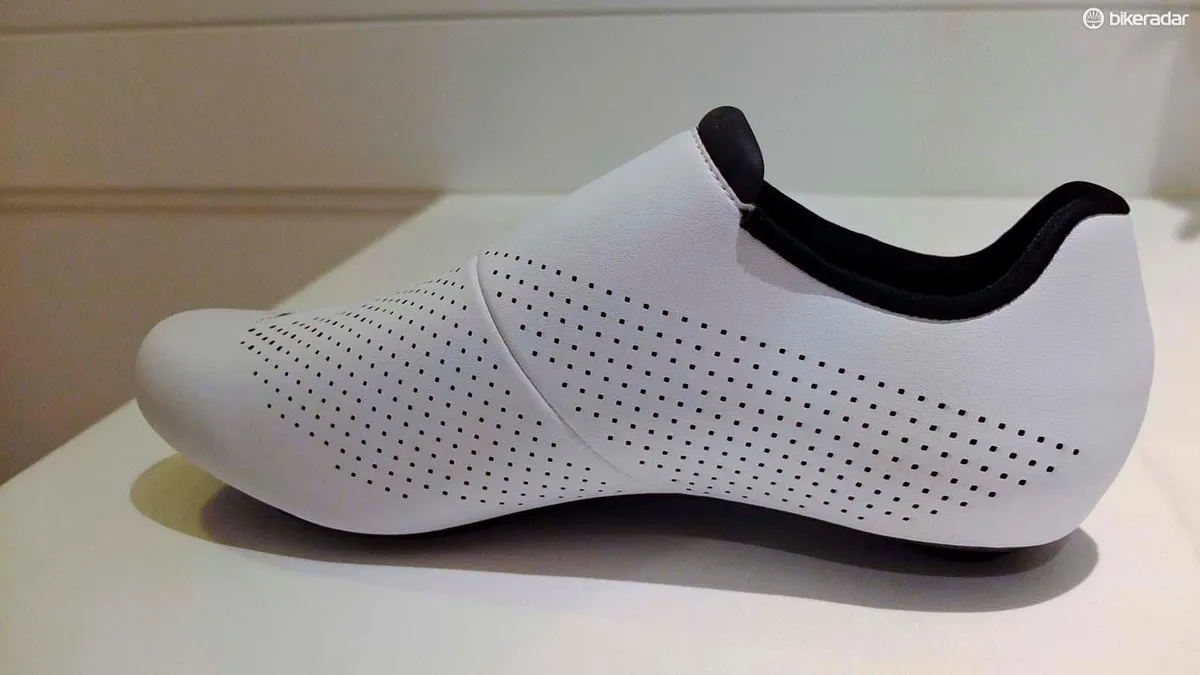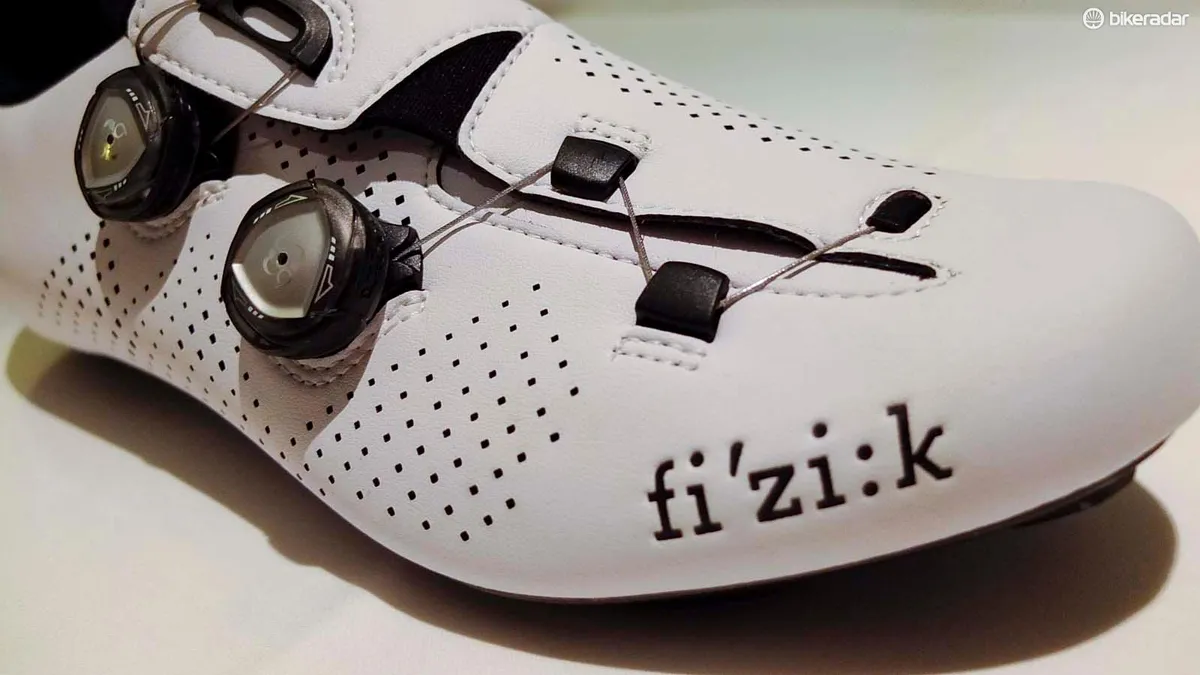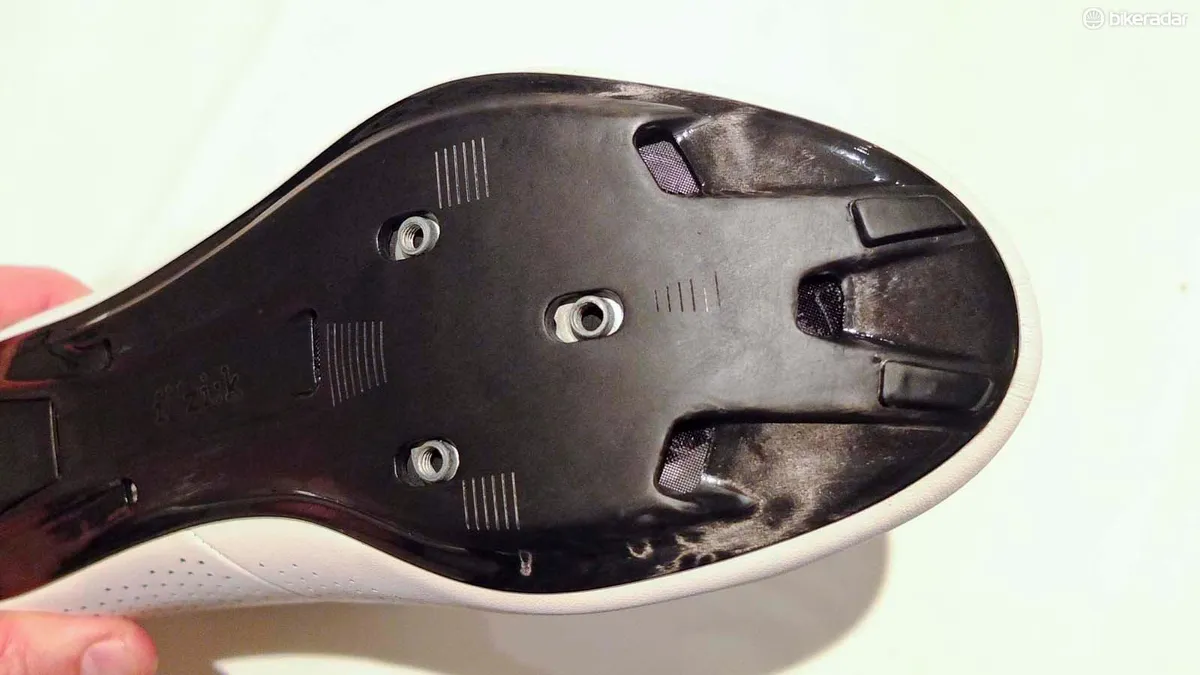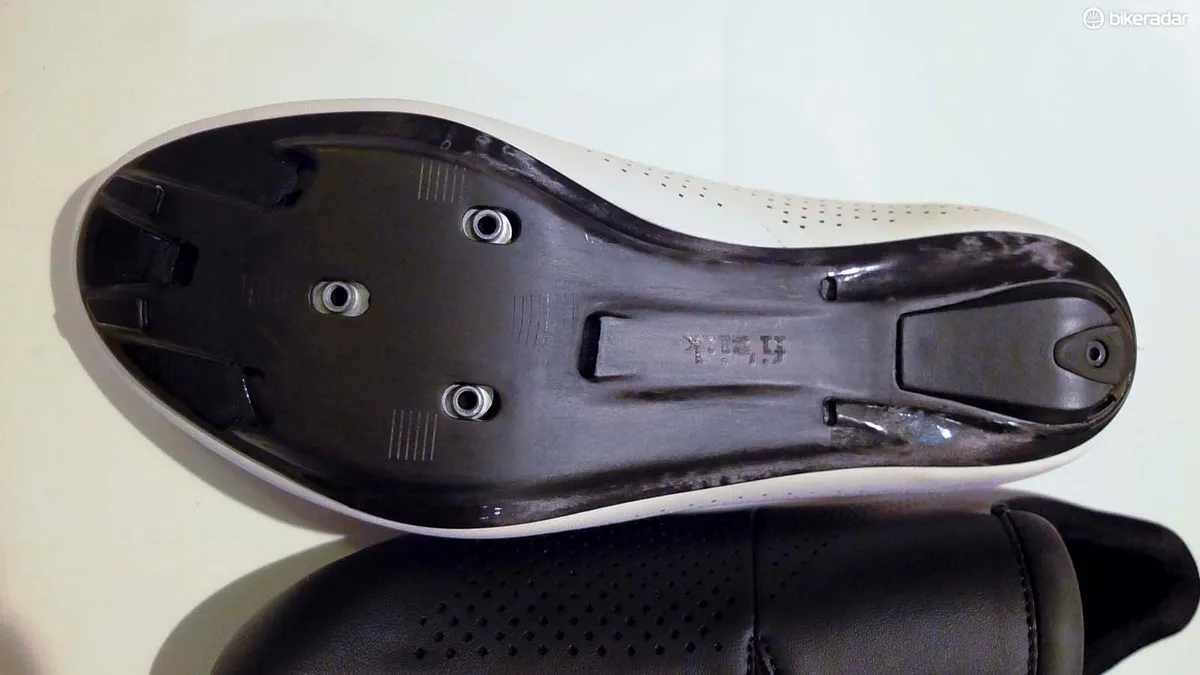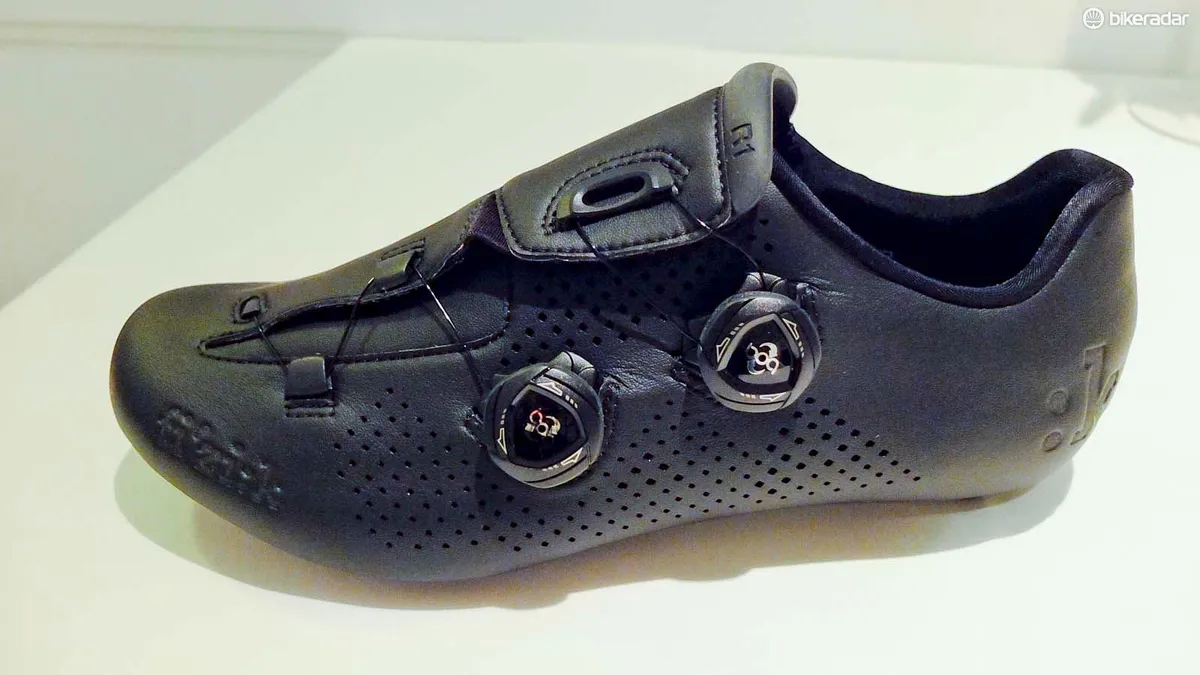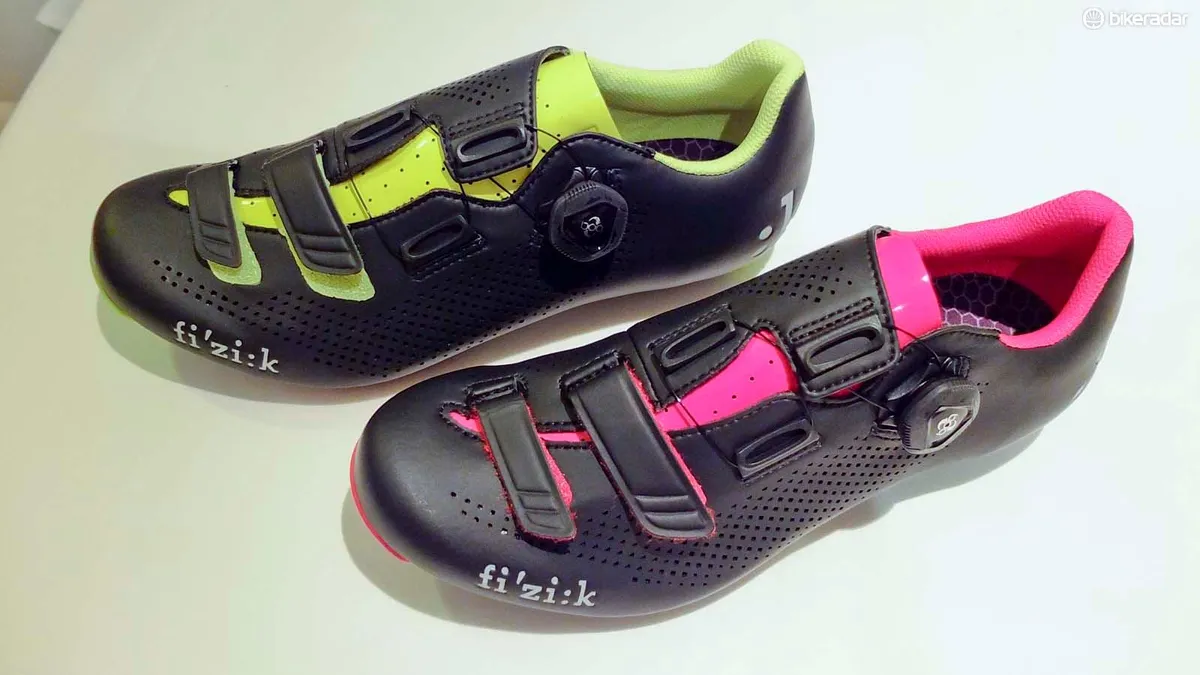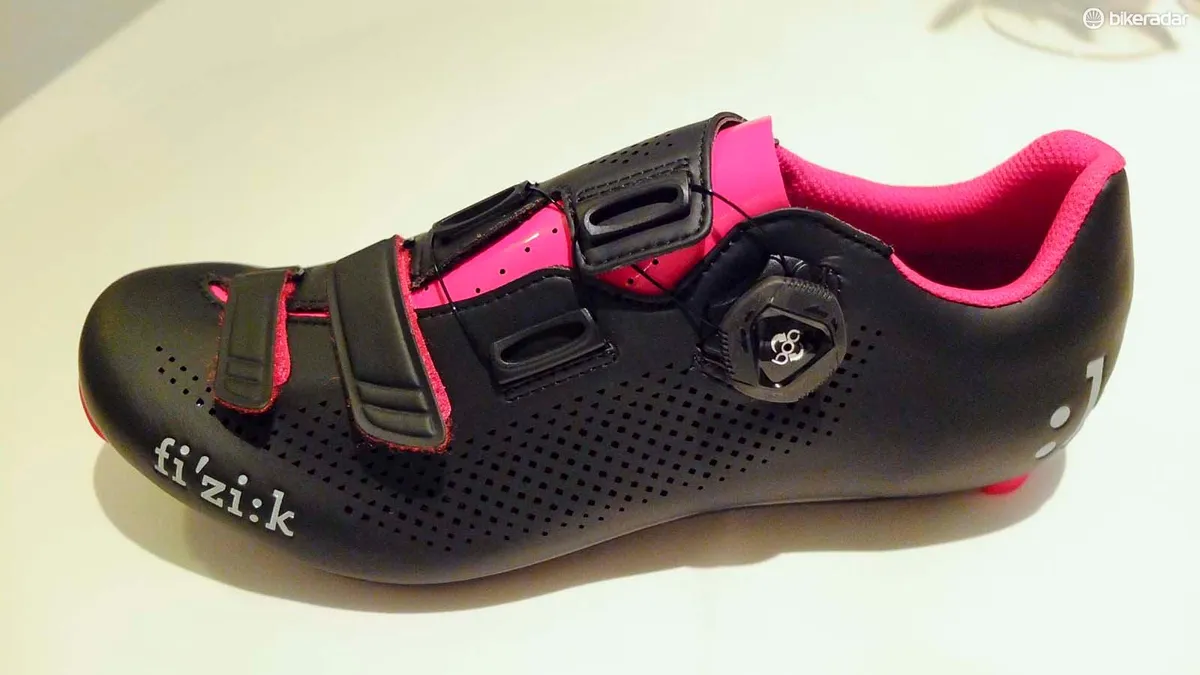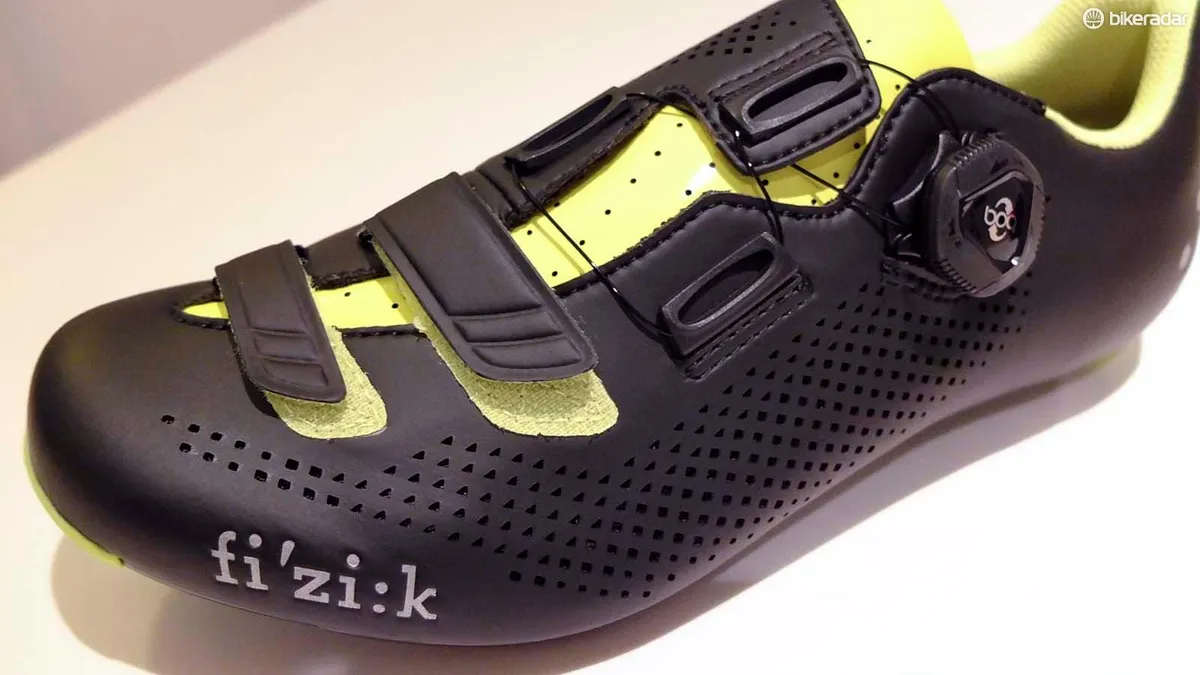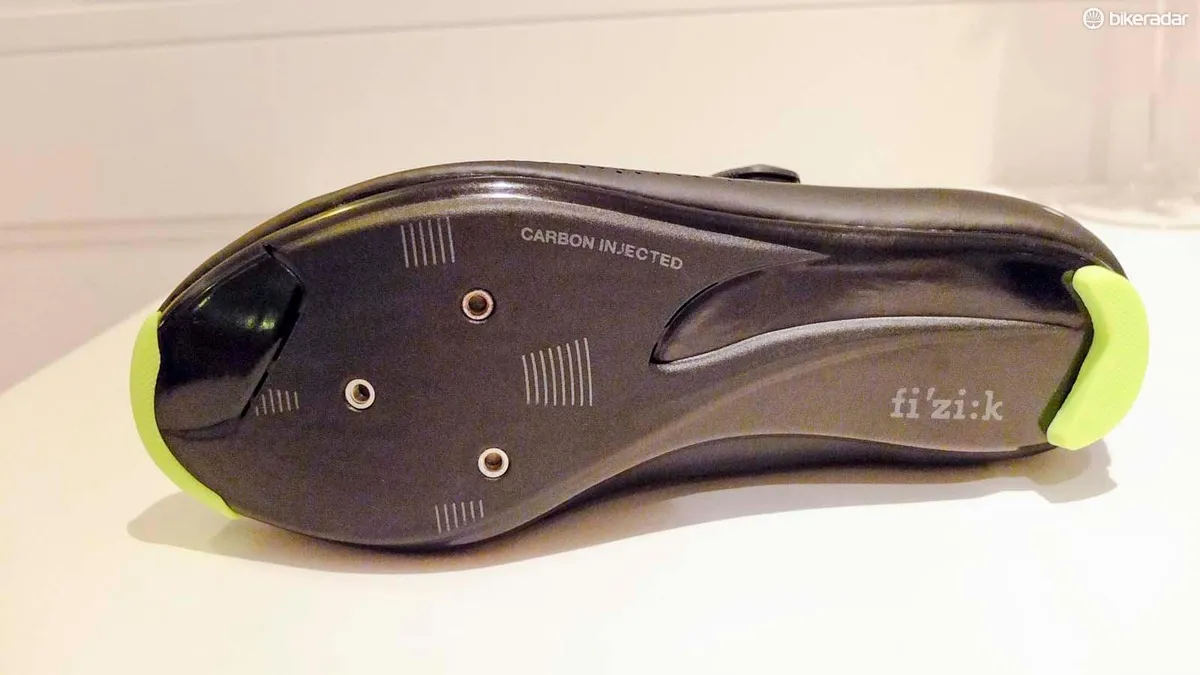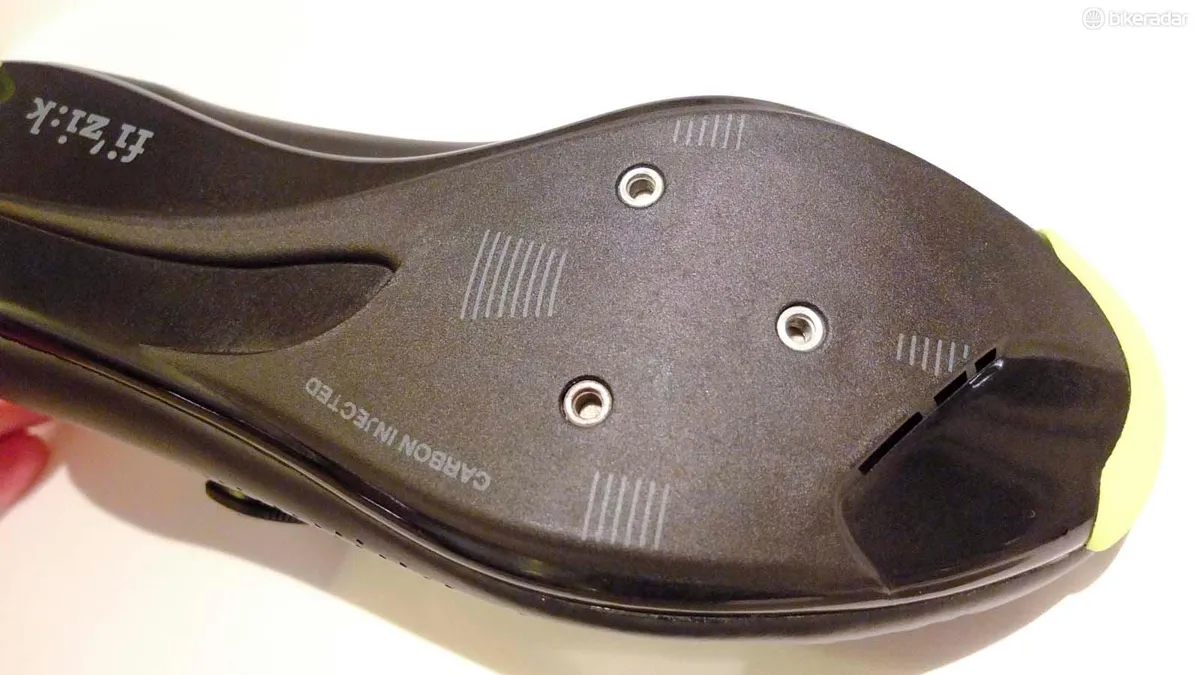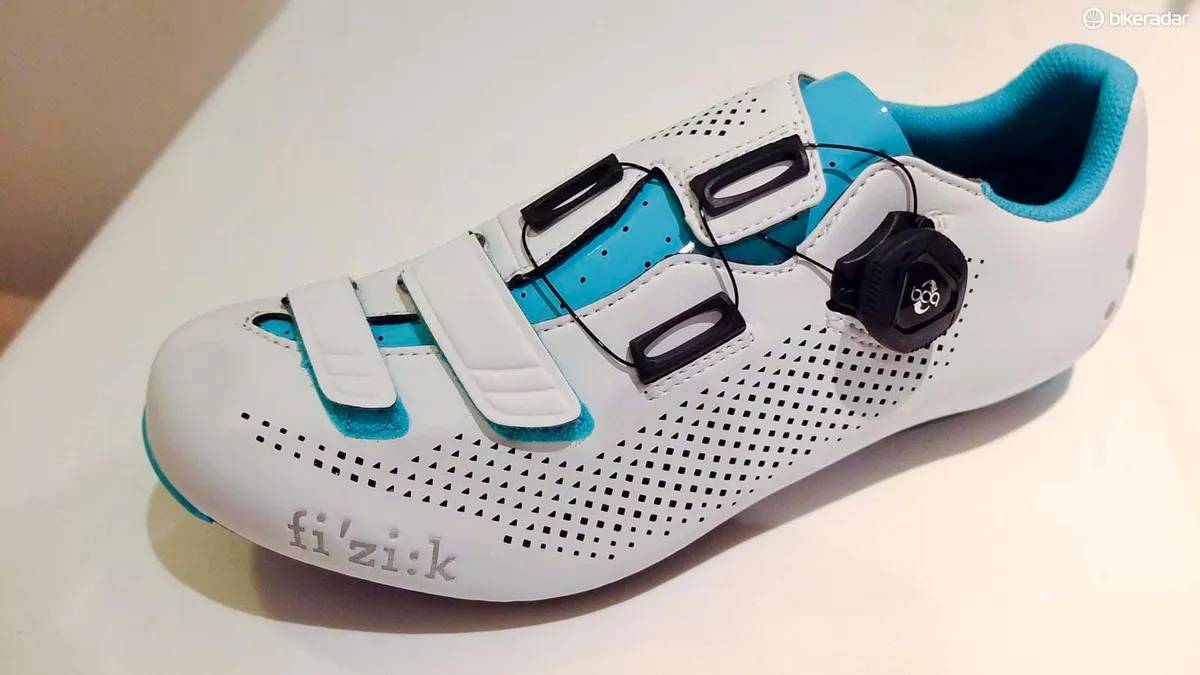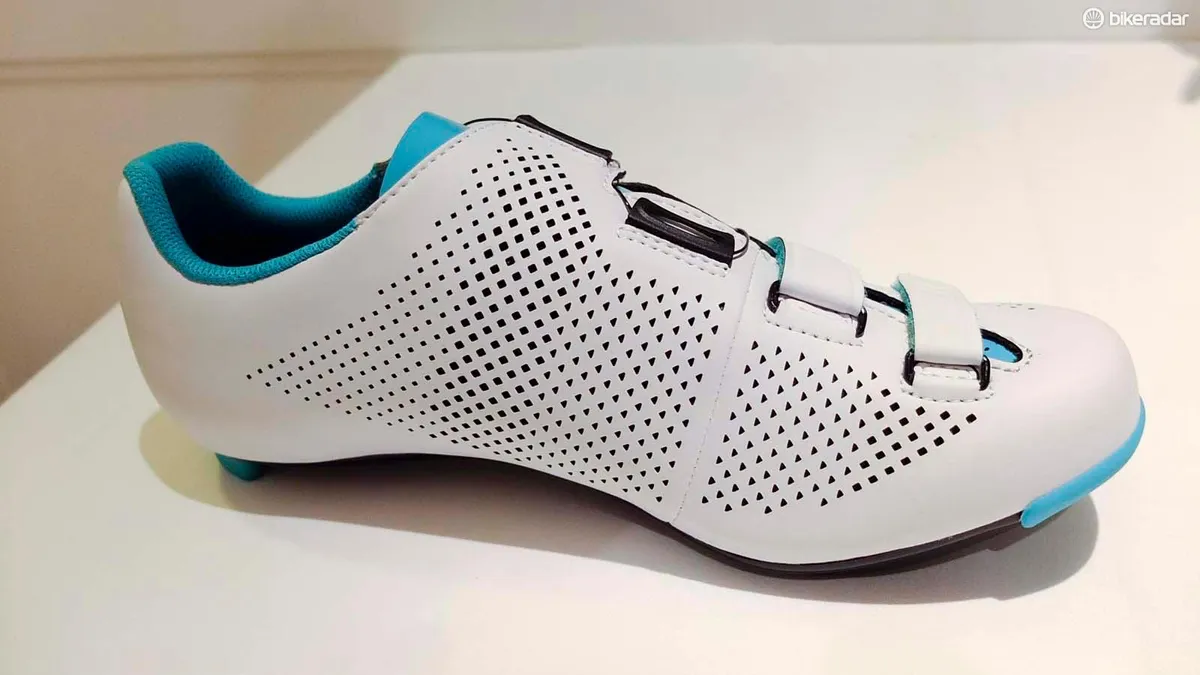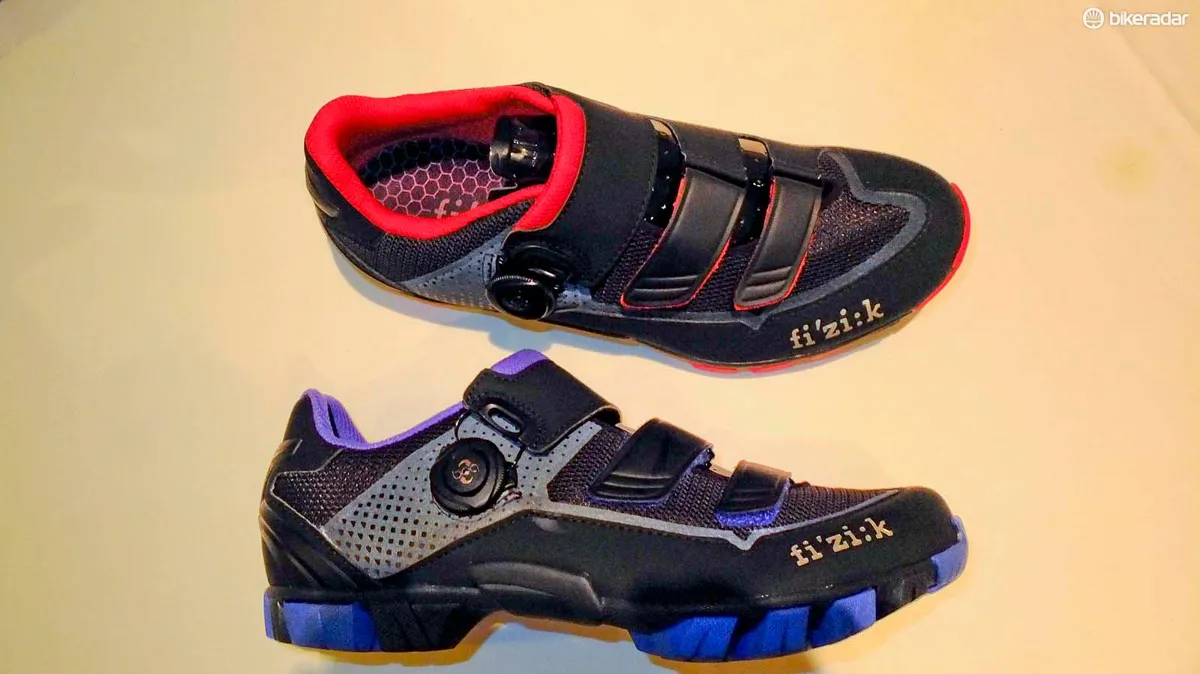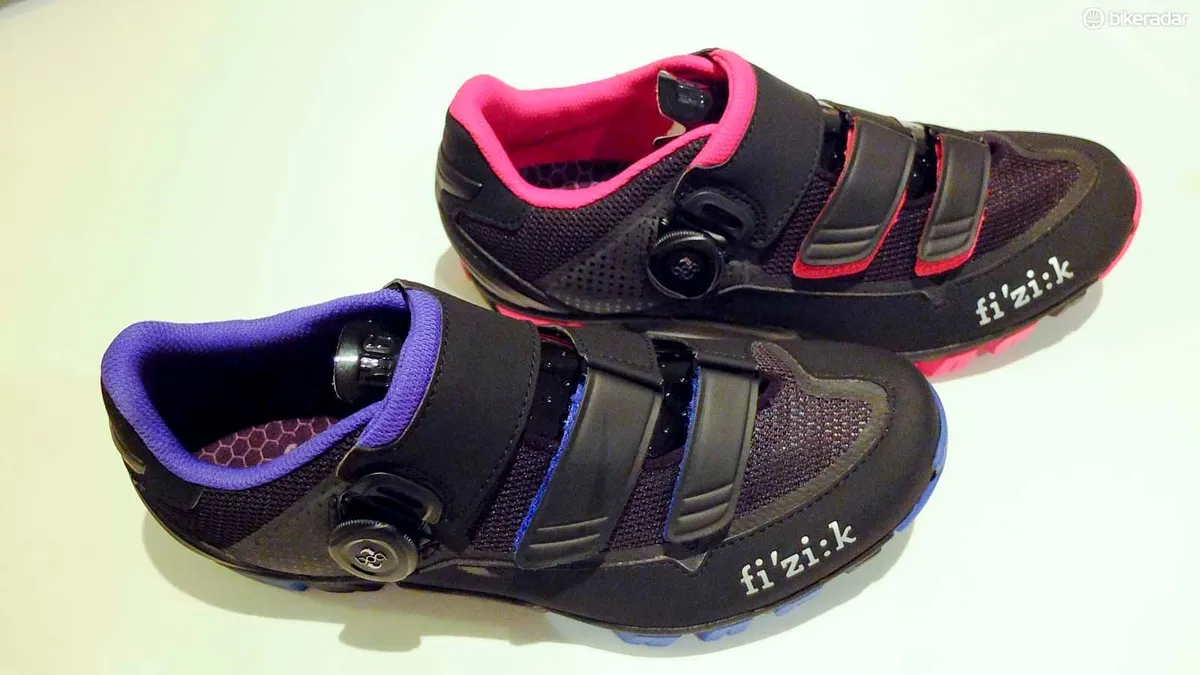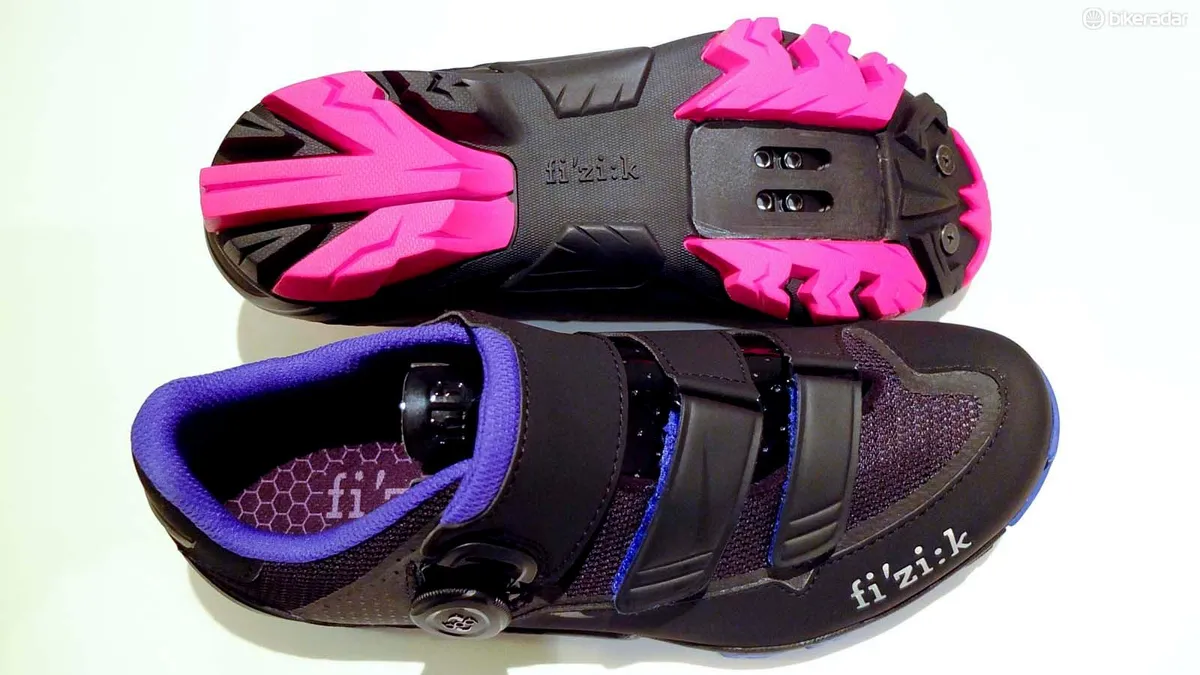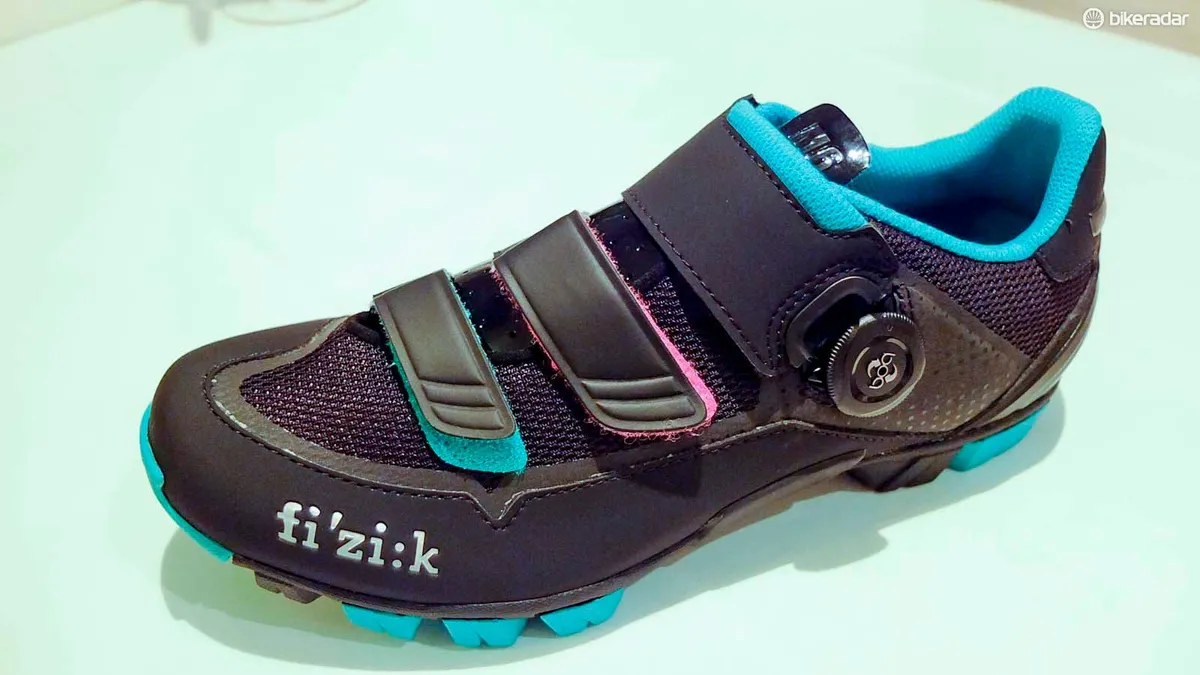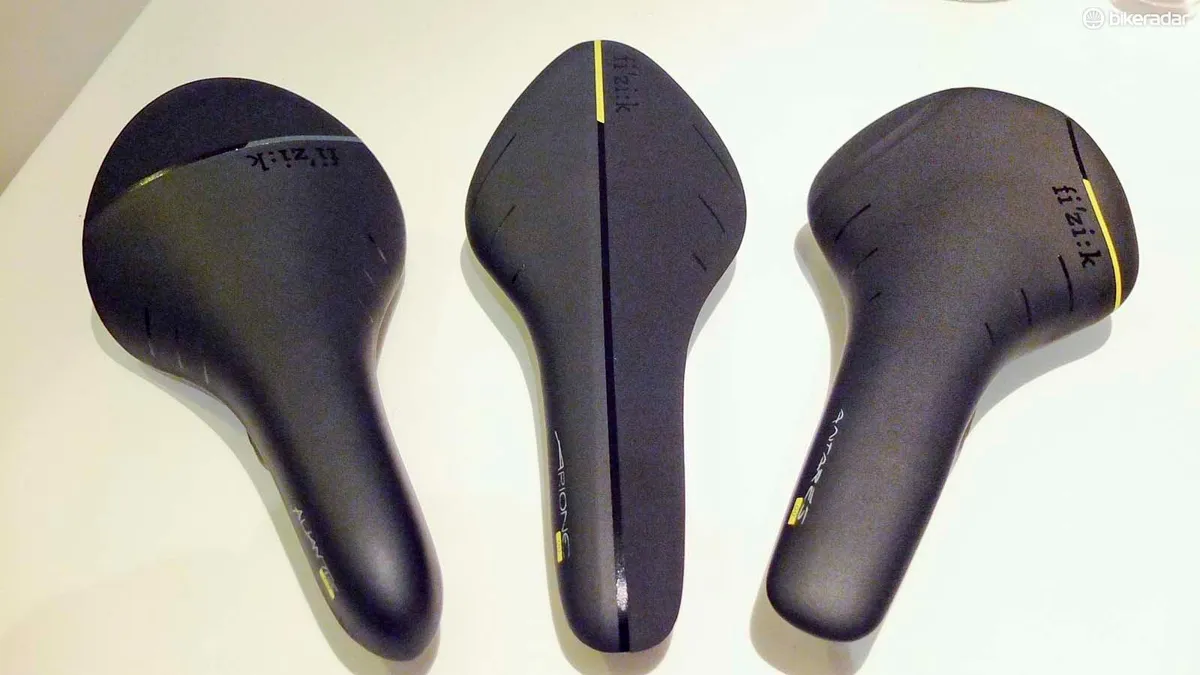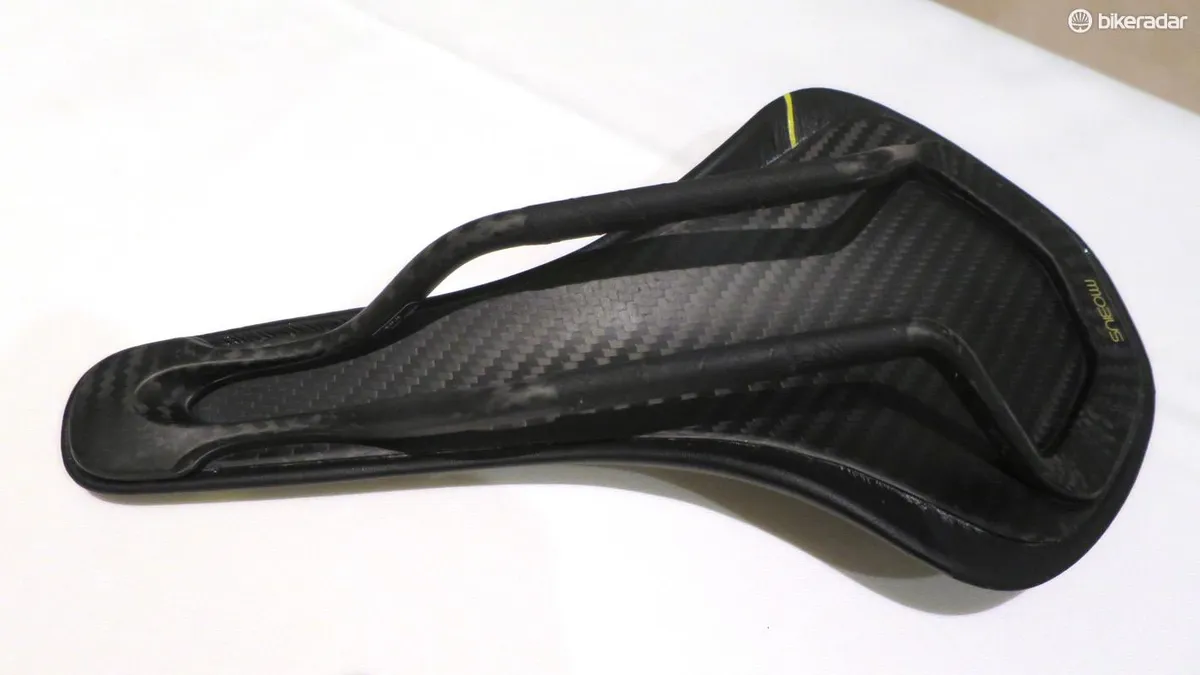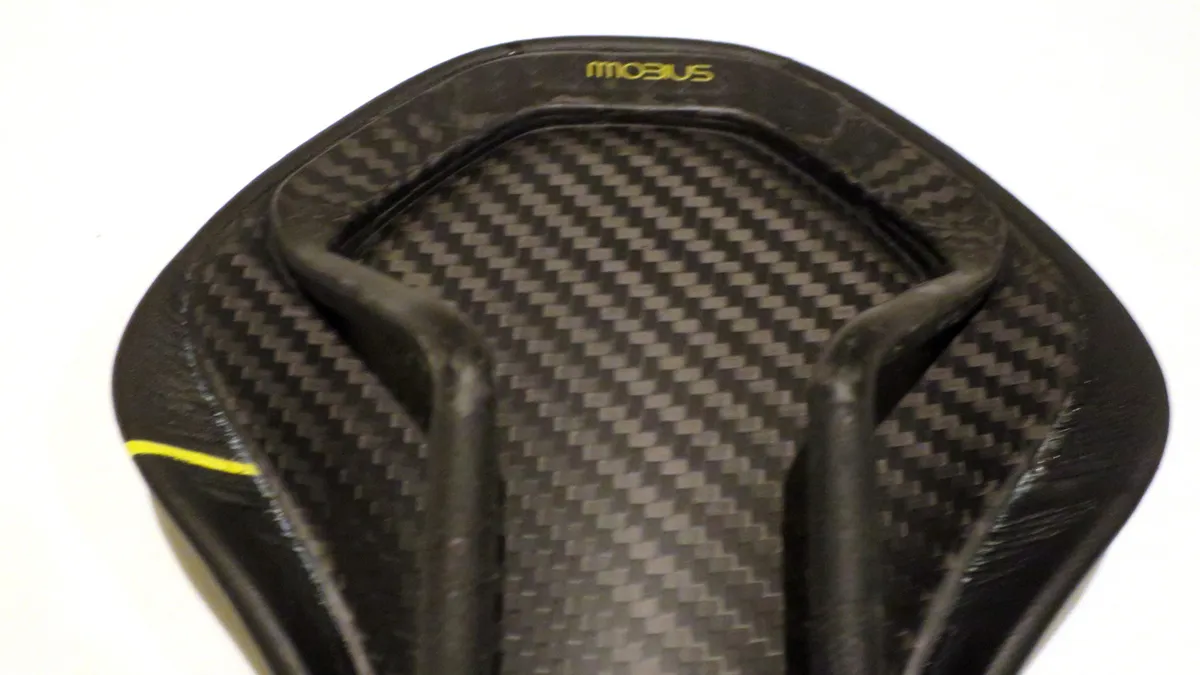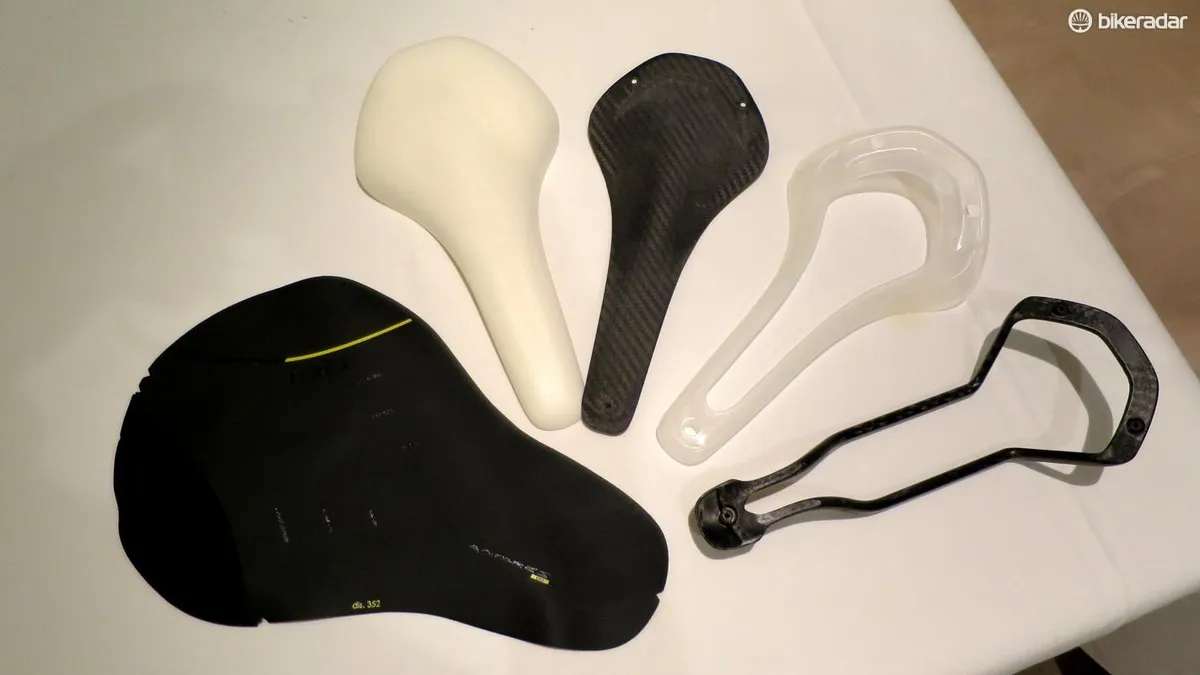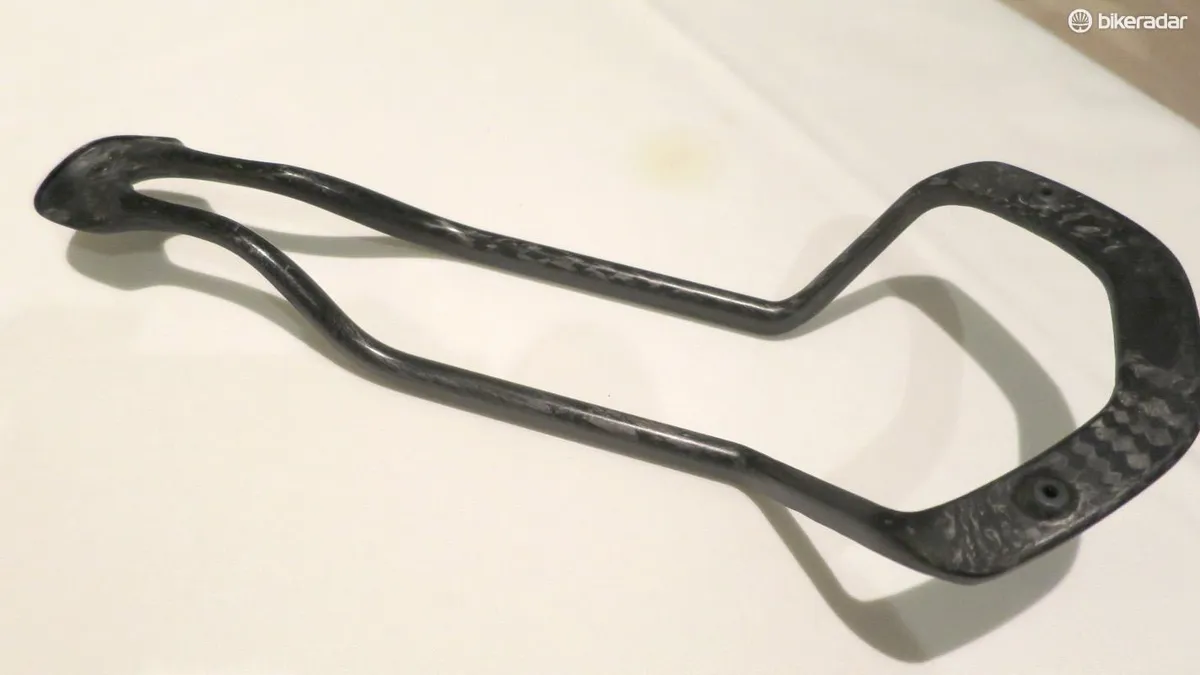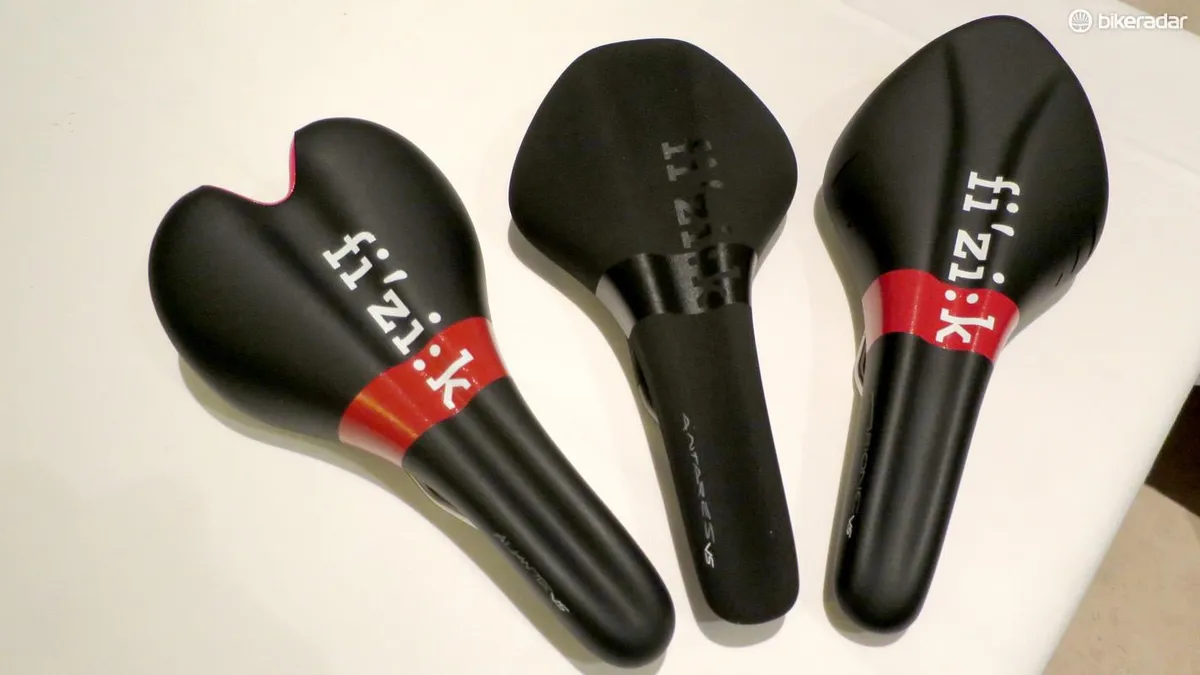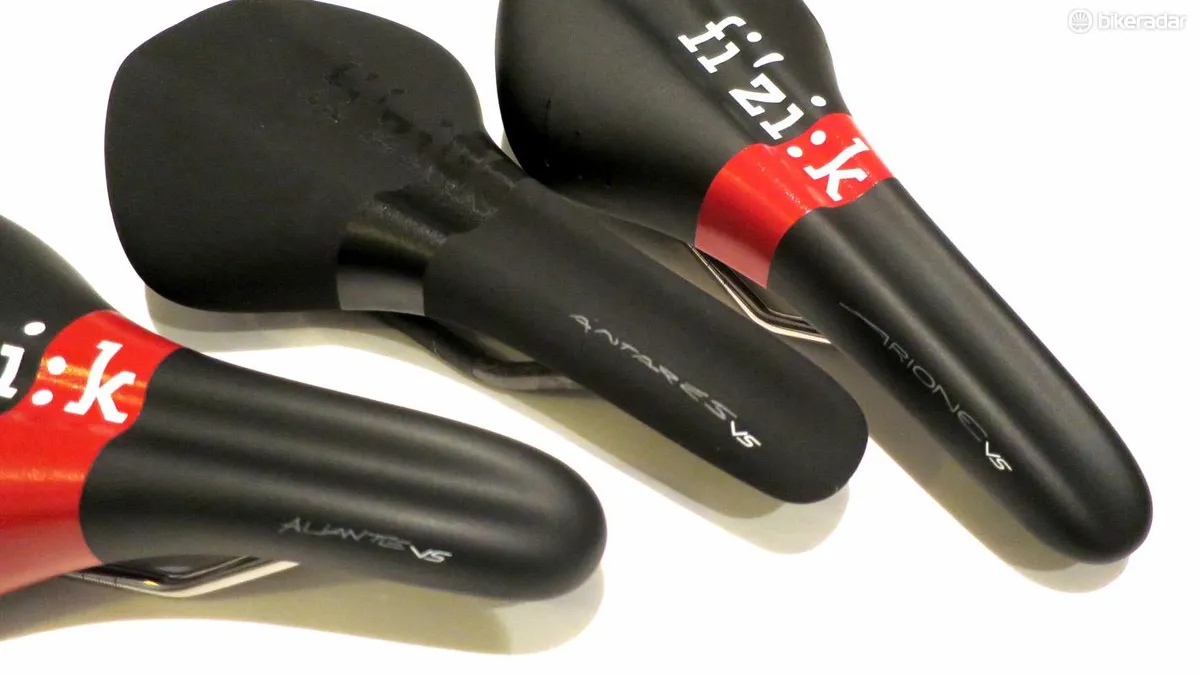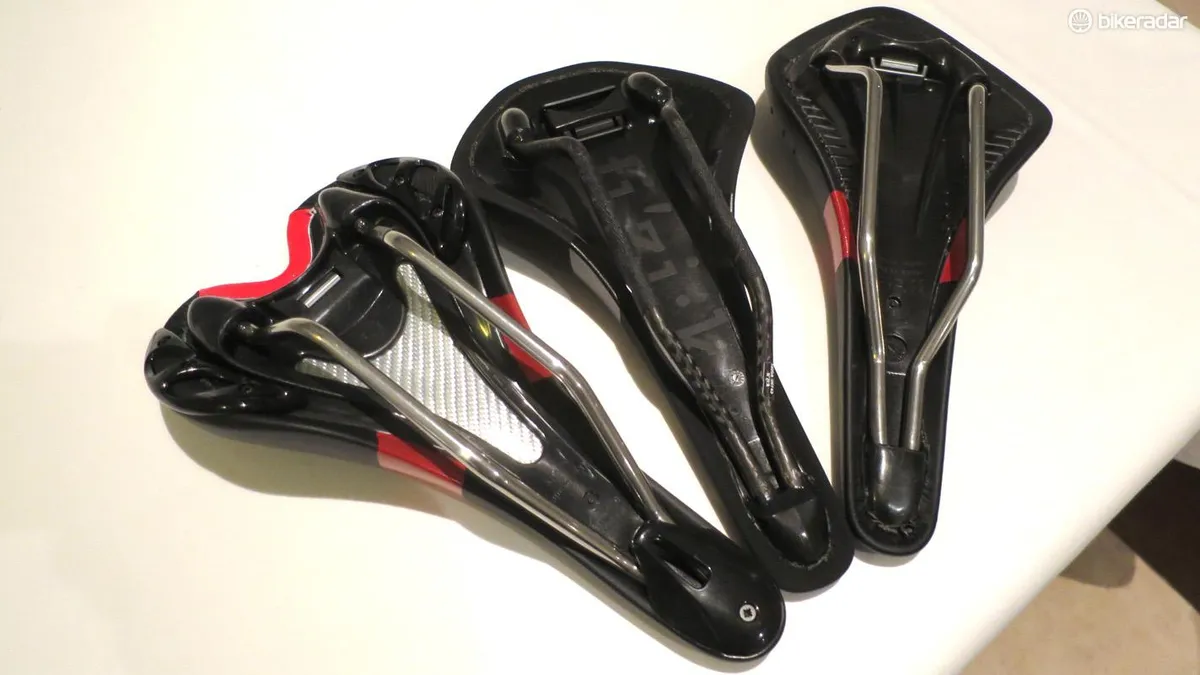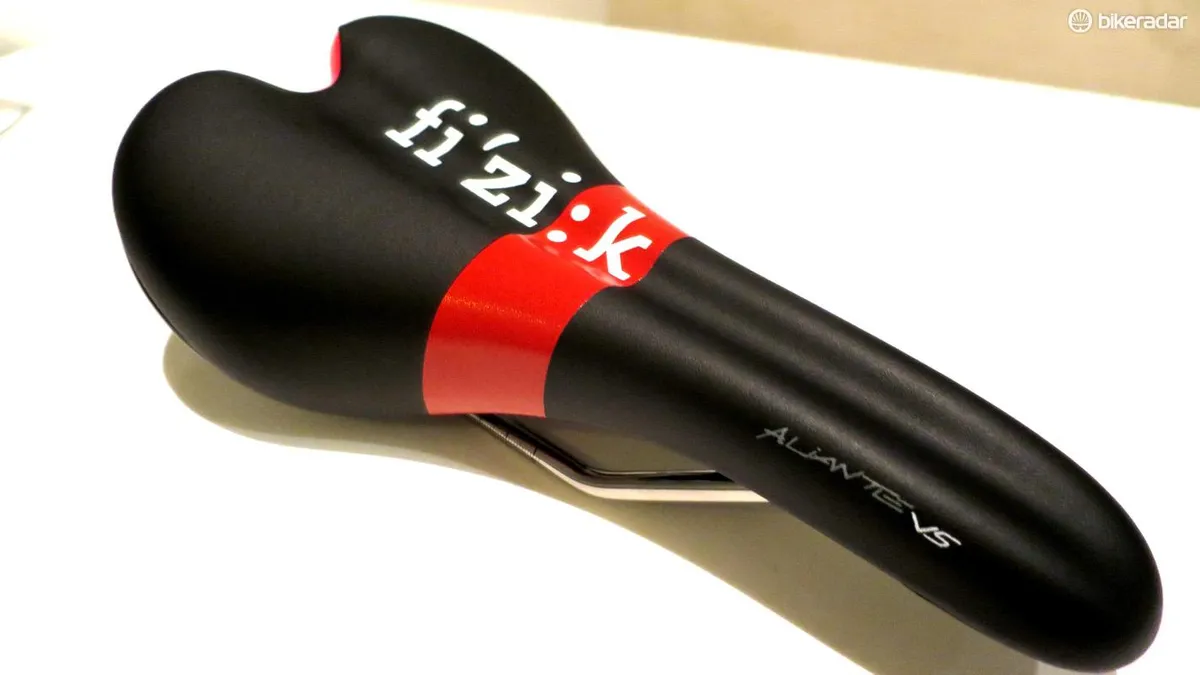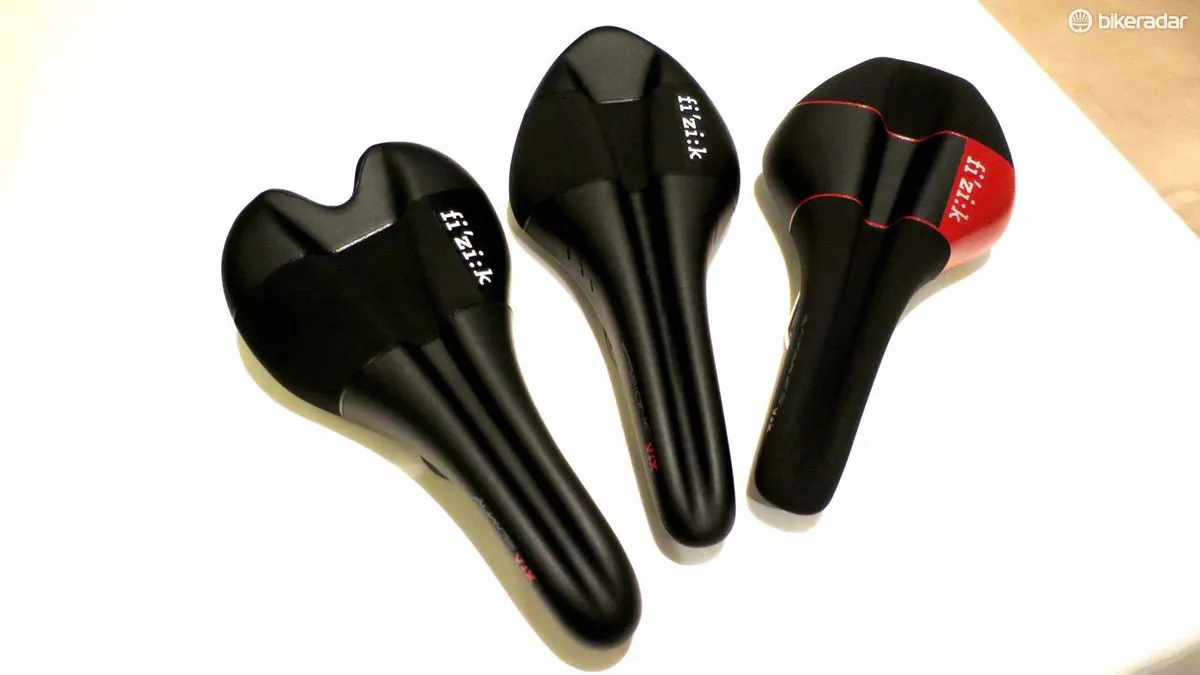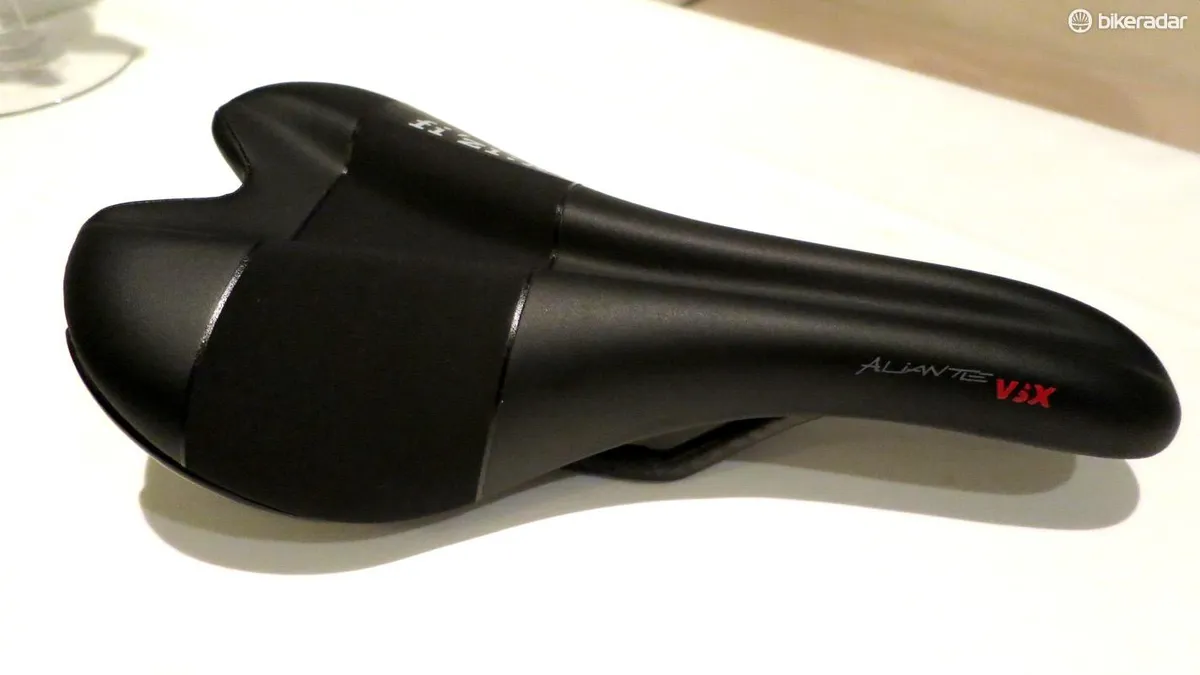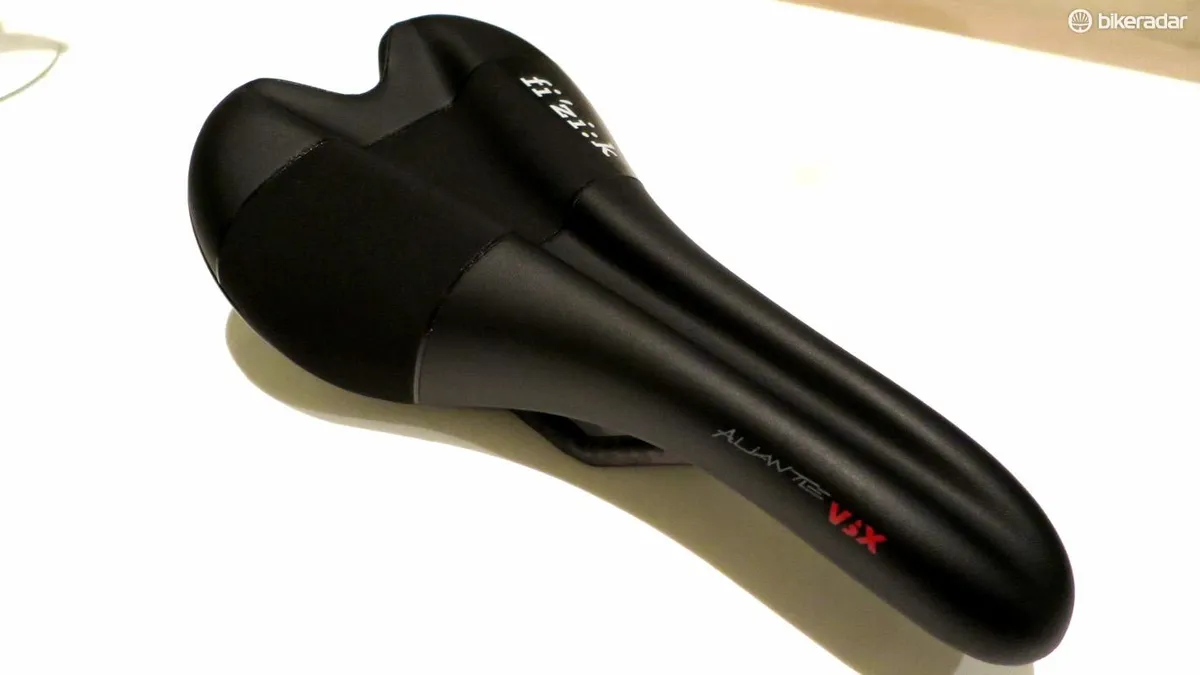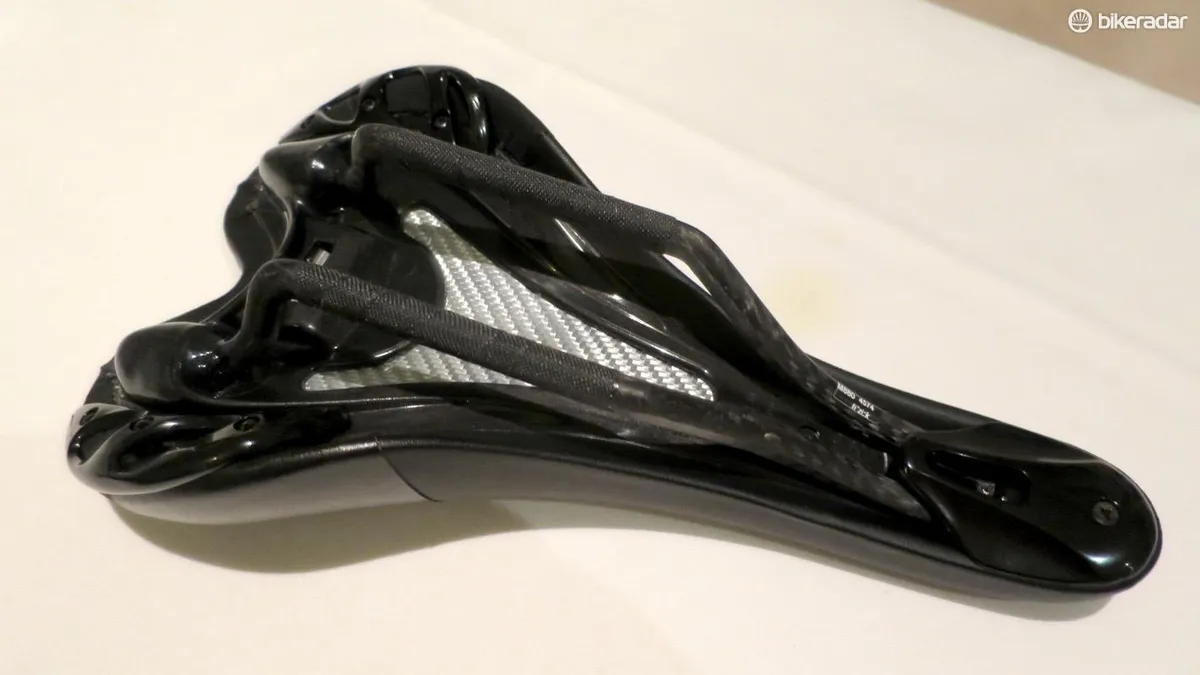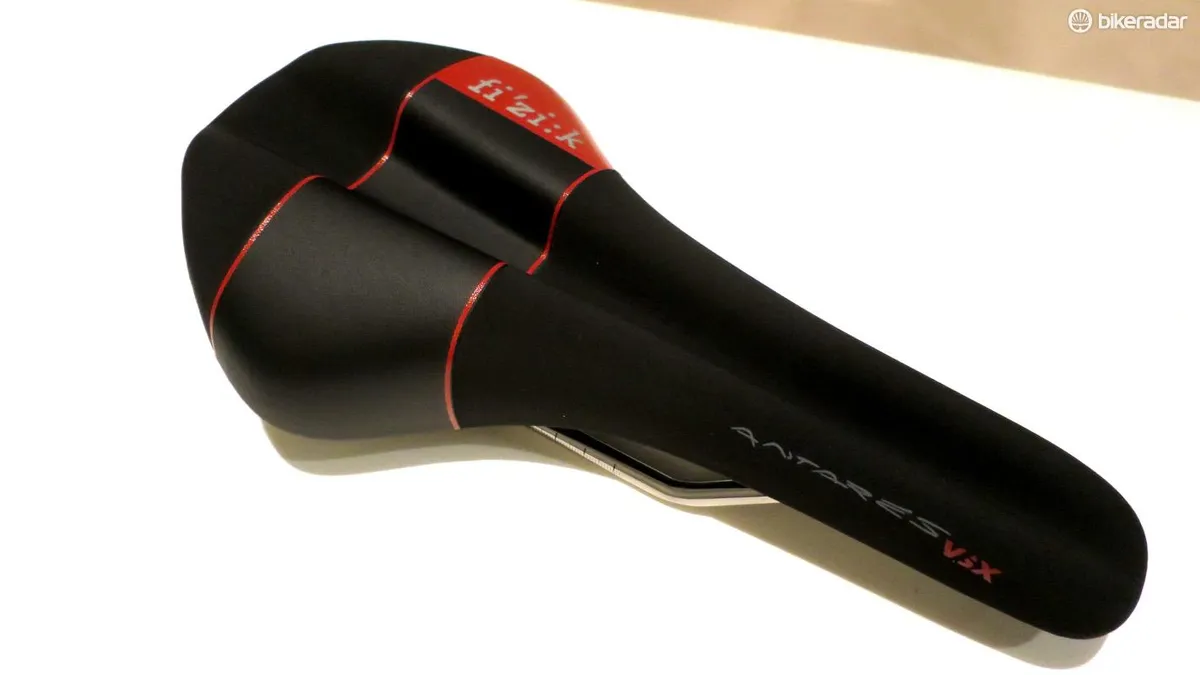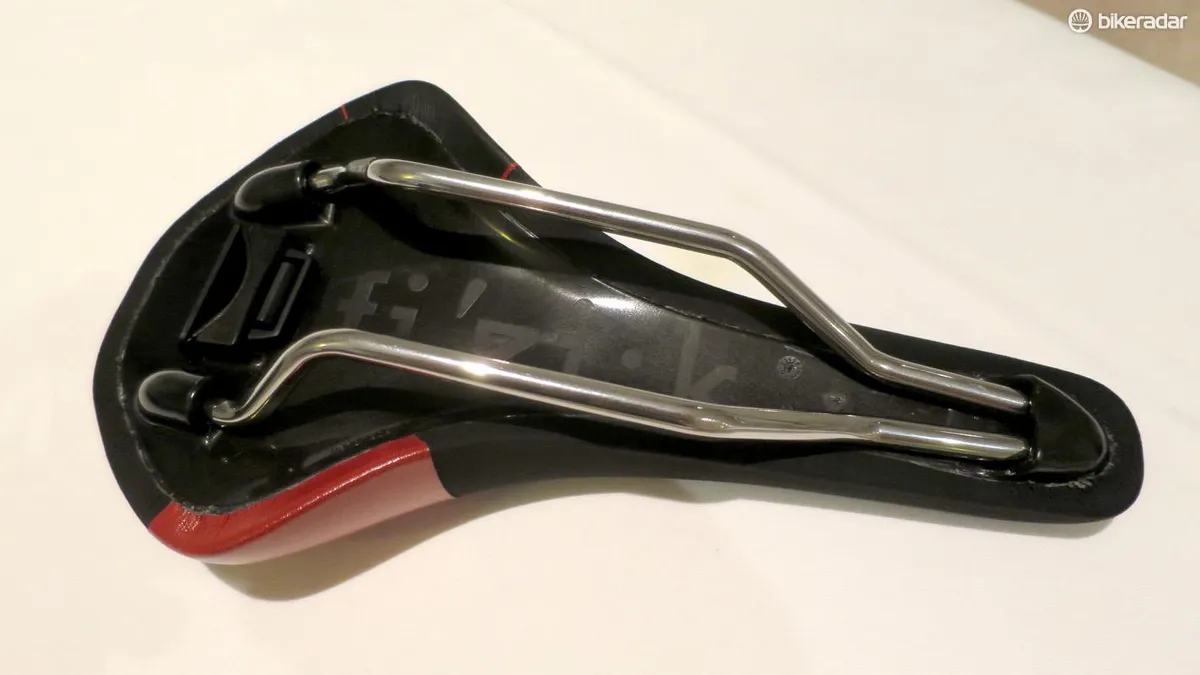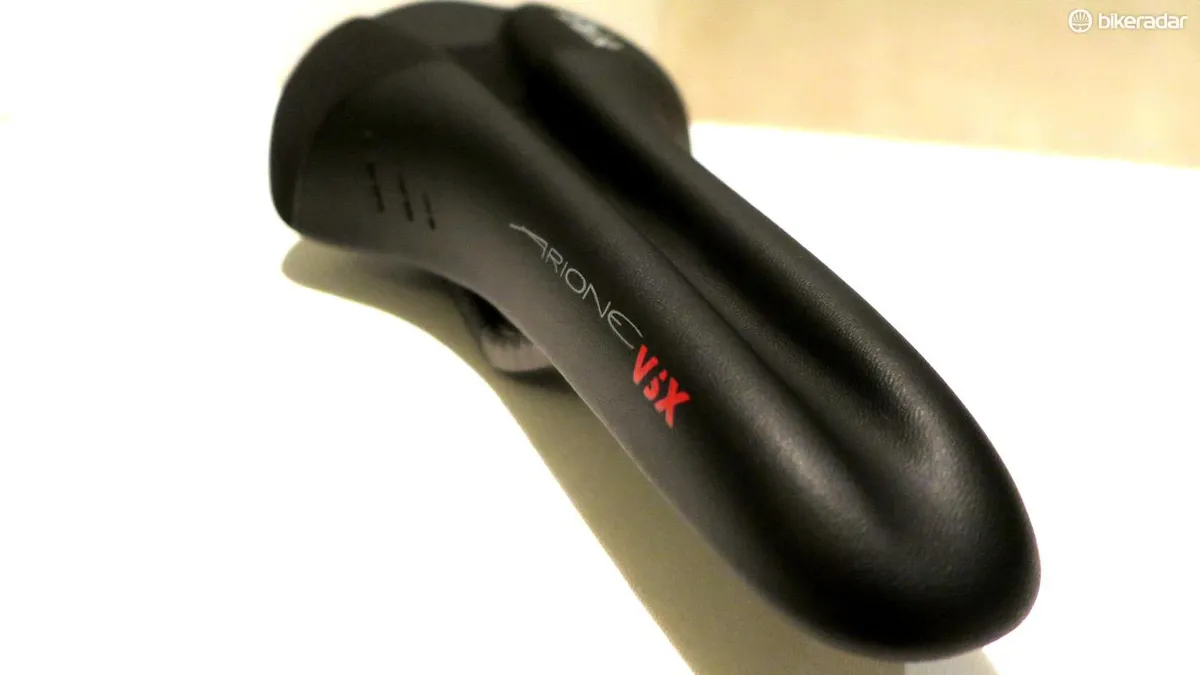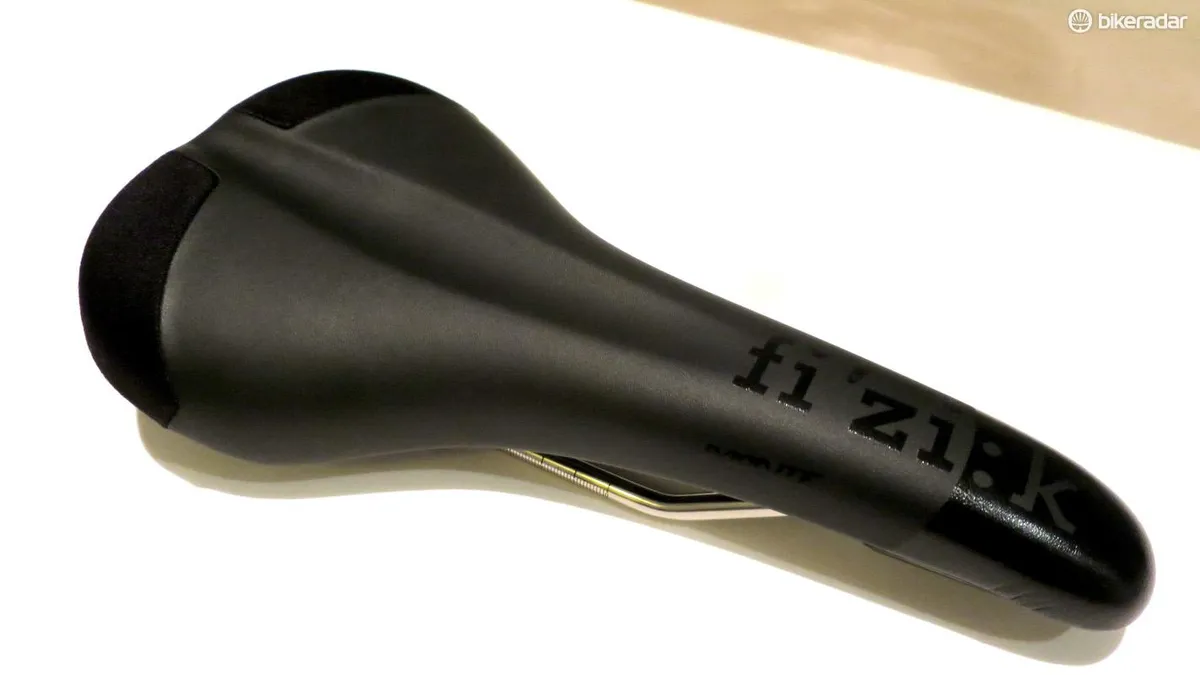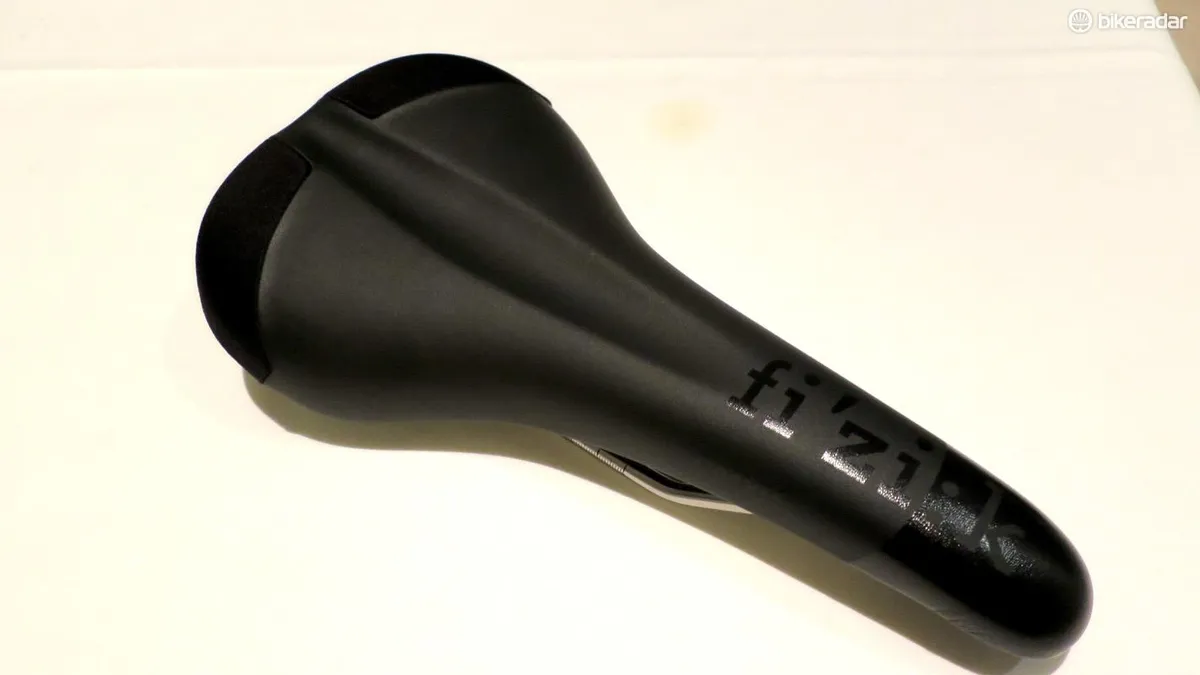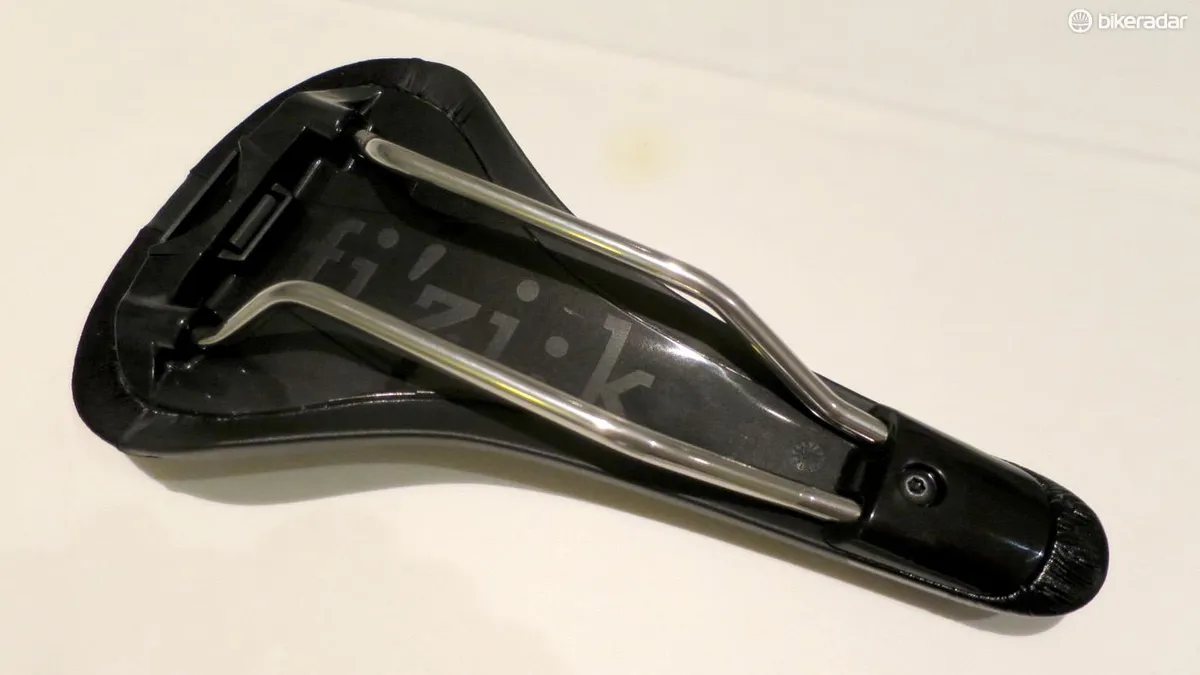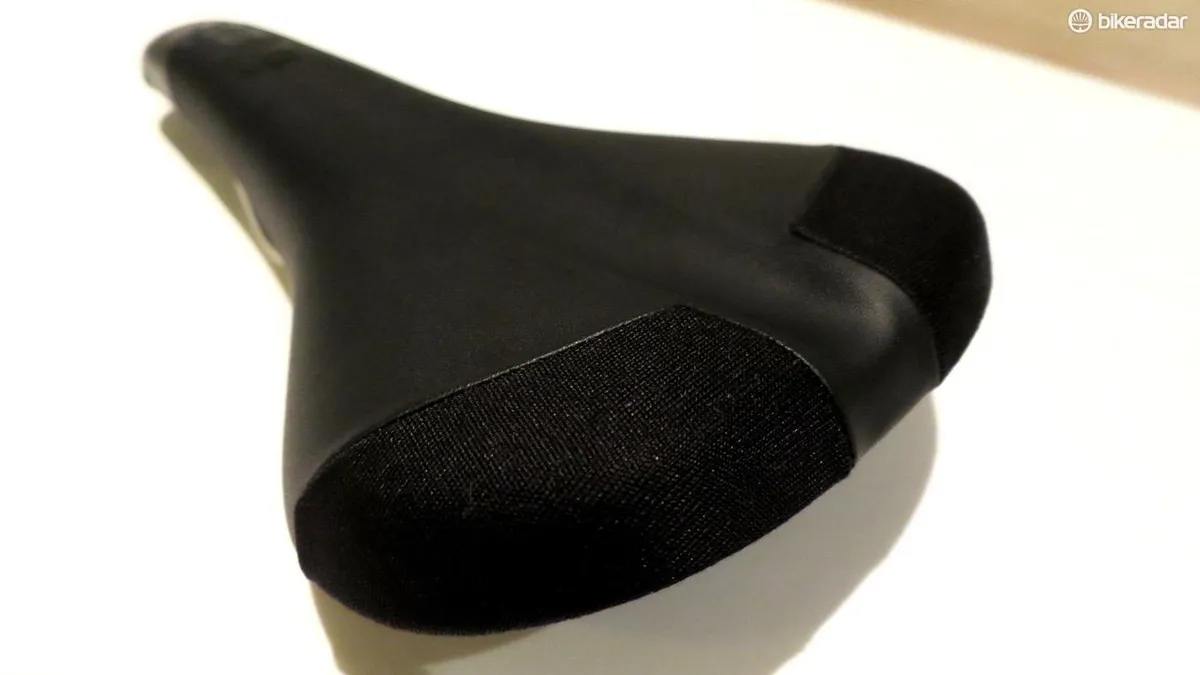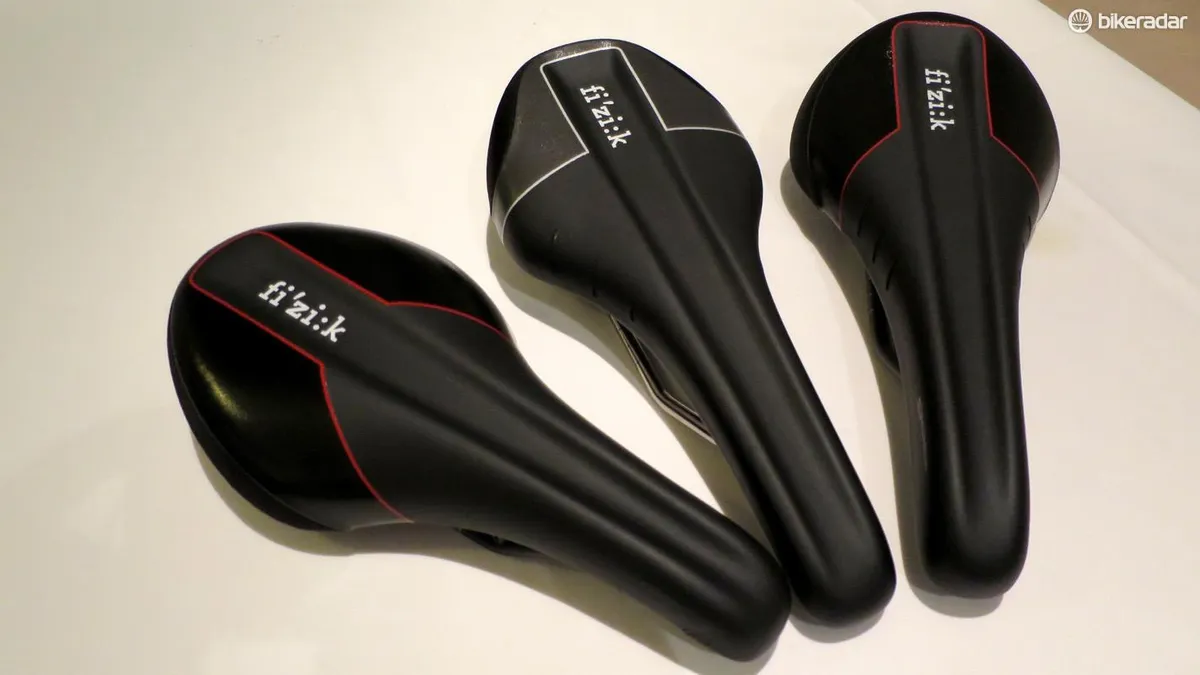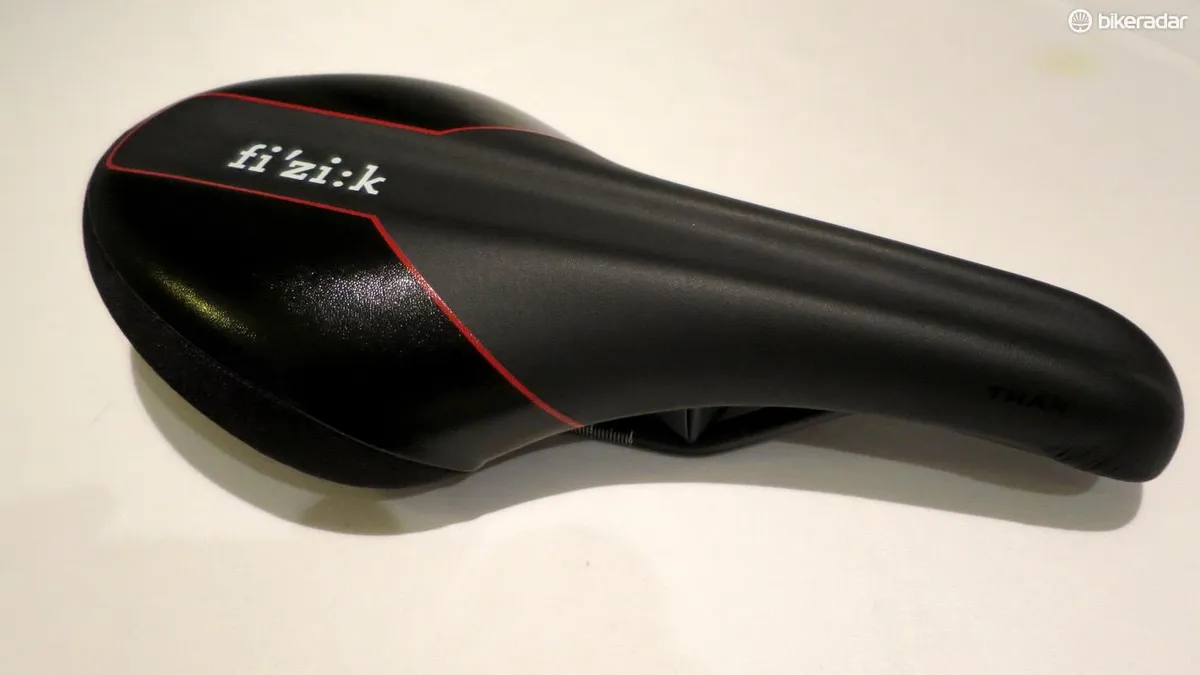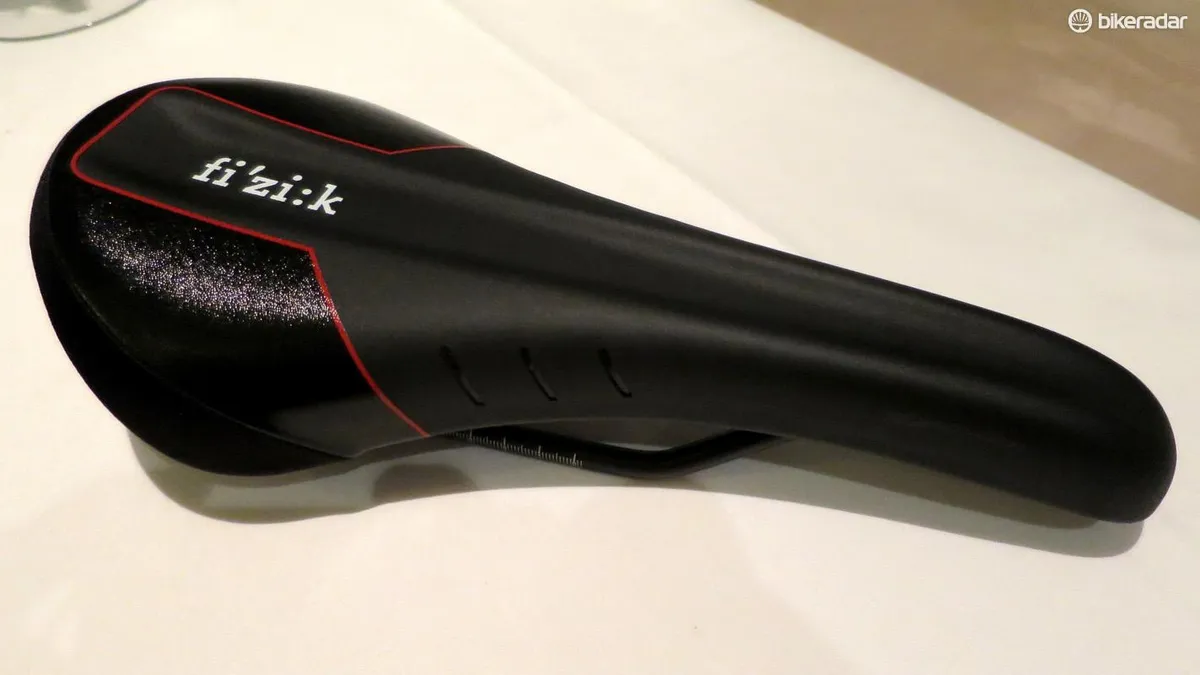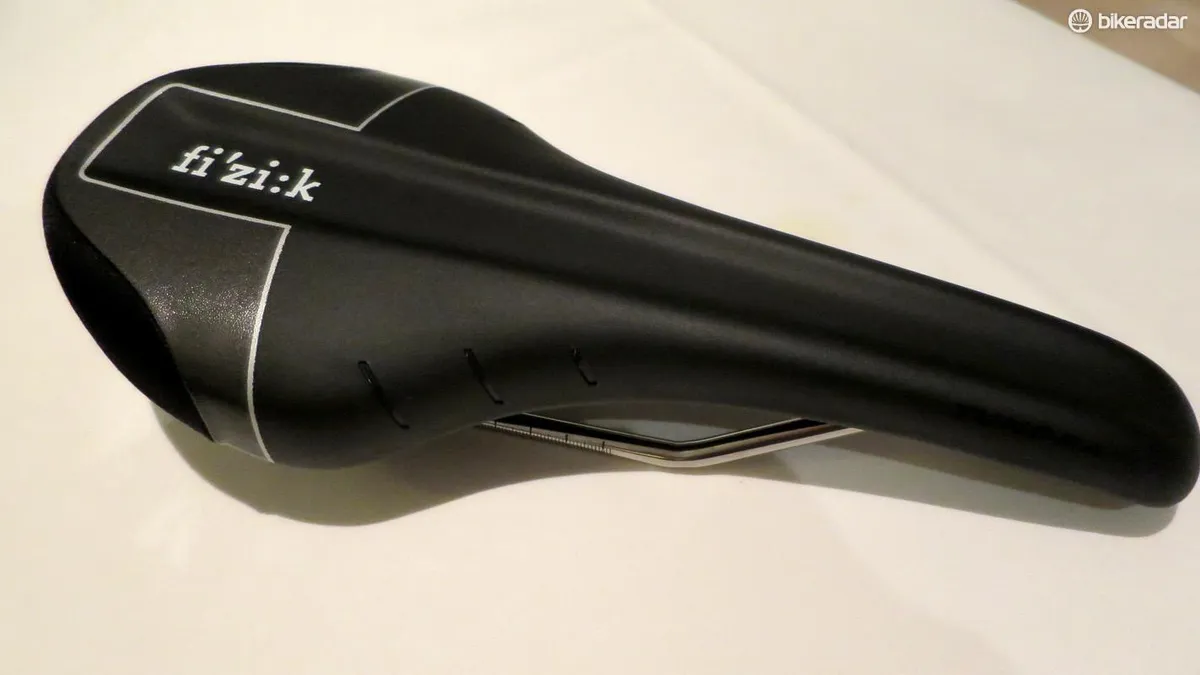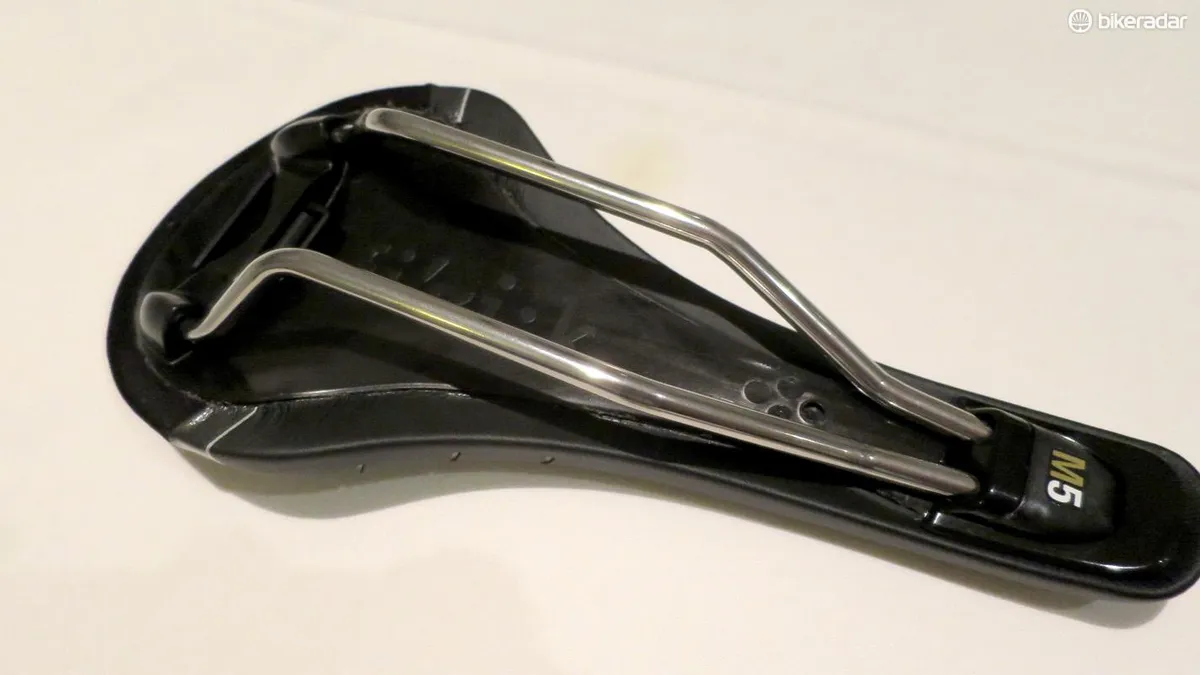For 2016, Fizik has a new 228g R1 shoe with a wider forefoot last and a unique BOA closure. The Italian brand also has a new high-end road saddle line called 00 with weights as low as 135g, plus a new mid-range MTB shoe, a mid-range road shoe and a new Enduro saddle.
Fizik R1 road shoe
At the heart of the new $400 / £299 R1 shoe, being shown at Eurobike, is a new BOA single-wire fitting system. Most BOA cycling dials have a twin-wire setup, but Fizik claims the single wire offers a more consistent pull with less friction.
The higher BOA dial controls retention, with its single wire pulling a large wrap-over section across the foot. The second dial’s wire zigzags across the forefoot and reduces the volume of the front of the shoe, creating a sock-like fit. Fizik claim the new system offers twice as much adjustment as traditional twin-dial shoes.
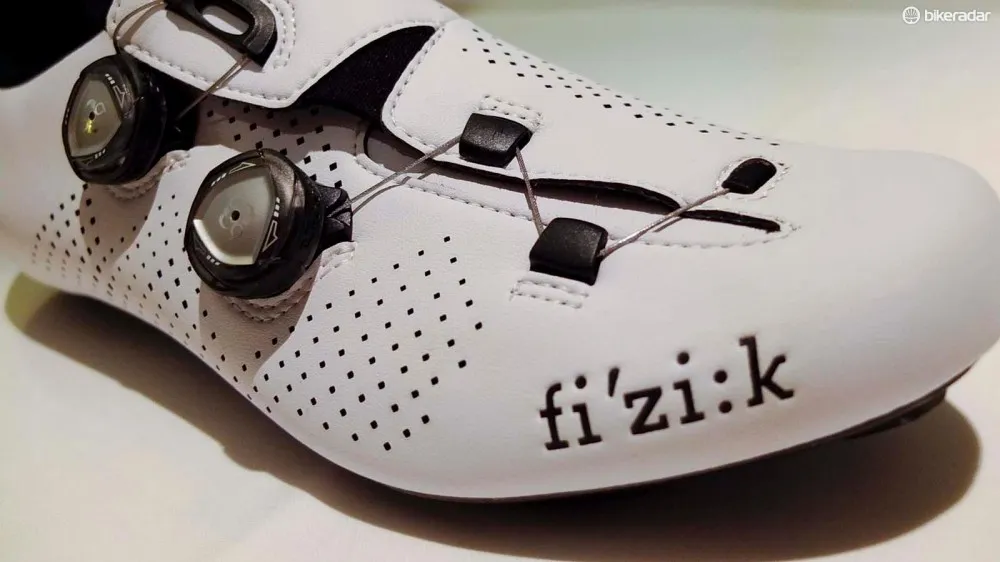
The R1 (and new mid-range R4) shoes are designed around a new last, and rather than a traditional, almost triangulated shape, the new last at the fore foot is wider and flatter in what Fizik describes as a more natural fit.
The outsole has the same high level of stiffness as the existing R3 shoe, but it’s 20% lighter at 67g compared to the R3’s 86g. Fizik shaved material with aerodynamics in mind; the stiffening elements of the design sit in-line with the cleat, allowing the rest of the sole to be minimized.
The sole features large forward-facing and rear-facing ventilation ports.
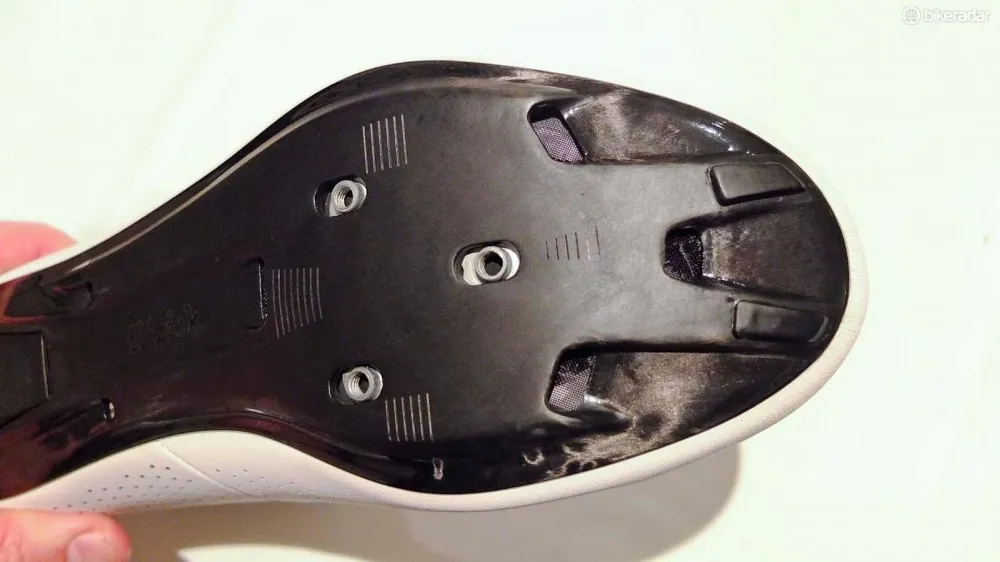
The finishing of the R1 is amongst the finest we’ve seen with clever touches like soft silicon tops to the tongue section for added comfort and finely finished edges to the upper where you’d usually see a trimmed edge. Even the venting holes on the upper change size and shape throughout the design and are all laser cut where you’d normally see punched out holes.
Fizik R4 shoe
The new $220 / £164 R4 is built around the same design principles as the R1 but sits between the base model R5 and the carbon-soled R3B. To keep costs down the R4 uses one IP1 BOA and twin micro-adjust straps taking the place of the volume-control dial on the flagship shoe.
The R4’s outsole is made with a carbon-injected nylon that keeps stiffness at the R3 level and keeps the weight low without the expense of a full-carbon sole.
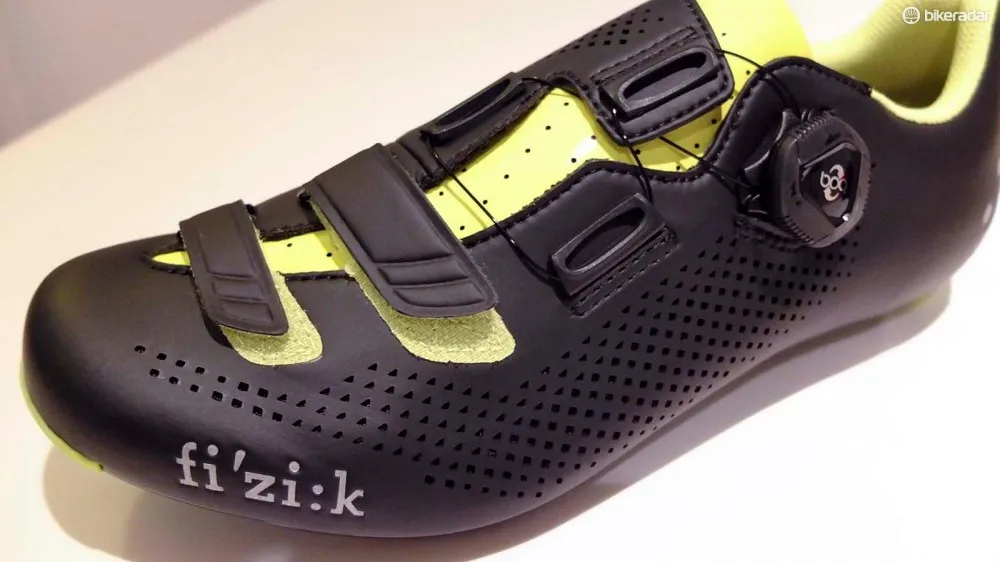
Despite its more modest cost the R4 still features the same laser-cut upper and clean finishing of the R1.
The women’s R4 Donna uses the exactly the construction but with emerald highlights and neon pink.
Fizik M6 and M6 Donna MTB shoes
At $179 / £129, the new M6 and M6 Donna are Fizik’s entry-level mountain bike offerings, featuring a dual-compound rubber outsole that sits over a carbon sole.
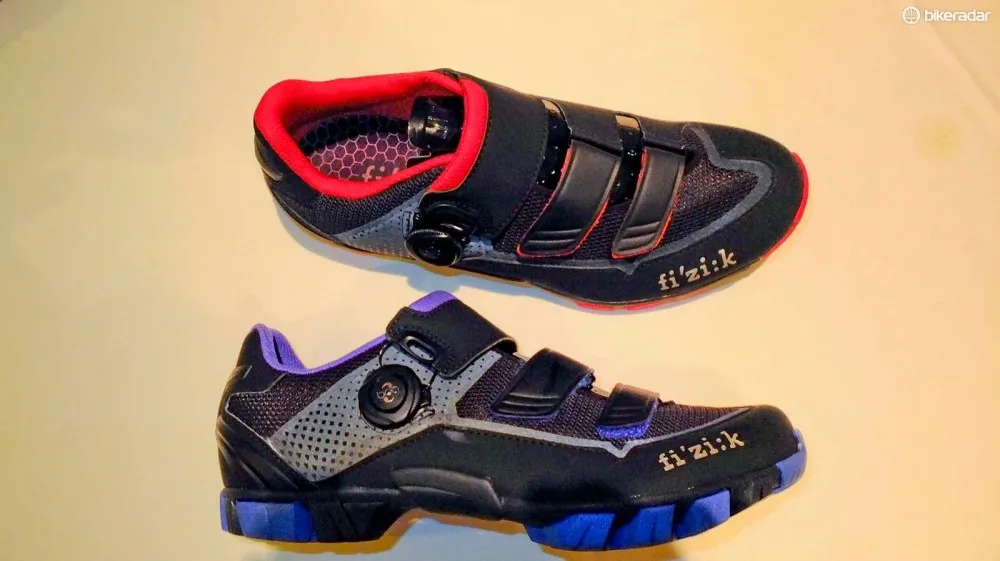
The M6 upper features large swathes of rubberized micro fibre for all-weather protection with a mesh ventilated mid foot. The outer side of the upper is coated with a matt-black reflective covering making the M6 a useful shoe to commuters as well as mud pluggers. The shoe weighs 370g.
Fizik 00 Arione, Antares and Aliante saddles
The new 00 line uses new construction methods to get the weights of the familiar Arione and Antares models down to 135g and 165g for the Aliante.
The rails are an adaptation of the one-piece Mobius rail first seen on the Kurve range, but with the nosepiece and rear fixtures incorporated into the rail.
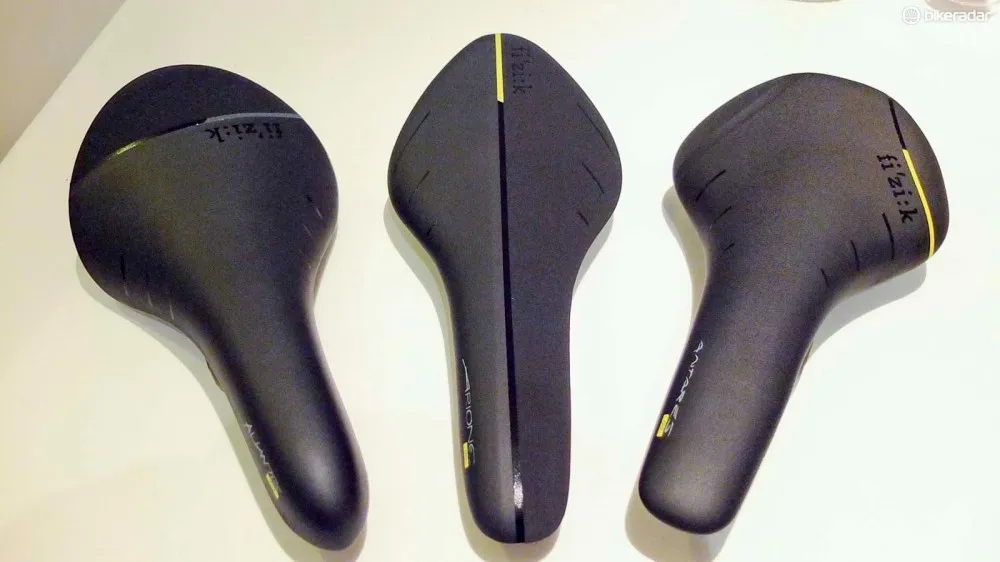
A nylon shell sits atop a pliable carbon base that has the same amount of movement as the original wing-flex designs of the Antares and Arione, Fizik claims. This new shell means Fizik can apply wing-flex properties to the Aliante, too.
Injection-formed EVA padding tops the nylon shell, with the cover bonded bonded directly to the carbon underneath, eliminating the need for glues and staples. Besides reducing weight, this gives the 00 range a super-clean look free of creases and folds.
The new 00 range has already seen action in the pro ranks with all spots on this year’s Tour de France podium occupied by riders using the Antares 00. Pricing for the range is still to be confirmed.
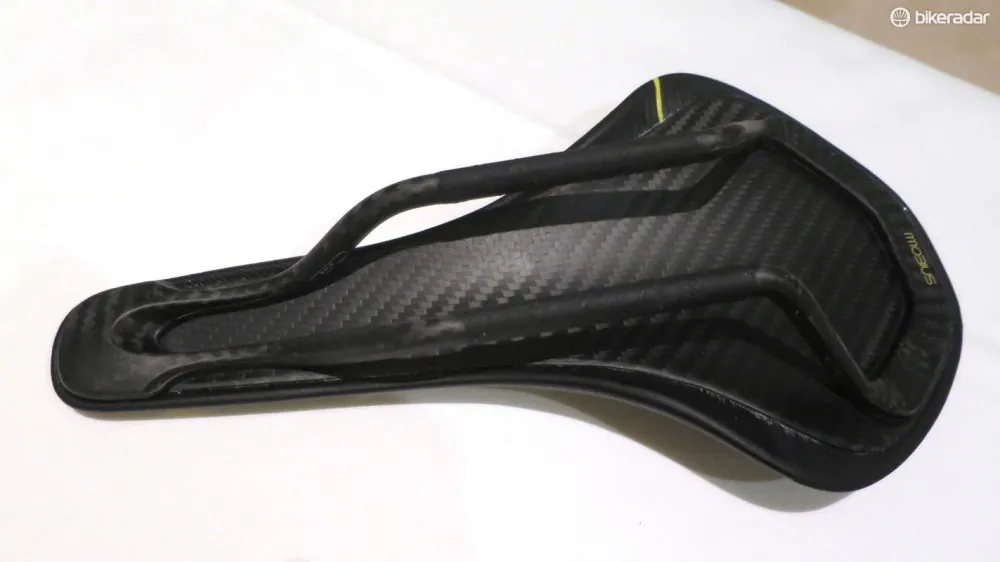
Fizik Monte enduro saddle
For mountain bikers, Fizik approaches saddle design for the discipline rather than rider flexibility like it does for road models. Until now, Fizik has had the 29er saddle the Thar, and the cross-country Tundra plus the Gobi marathon saddle.
For 2016, the new Monte enduro saddle has a flat shape (at 270mm x 146mm) with a long pressure-relieving groove. The base uses a carbon-injected base with some injected rubber providing some tail flex.
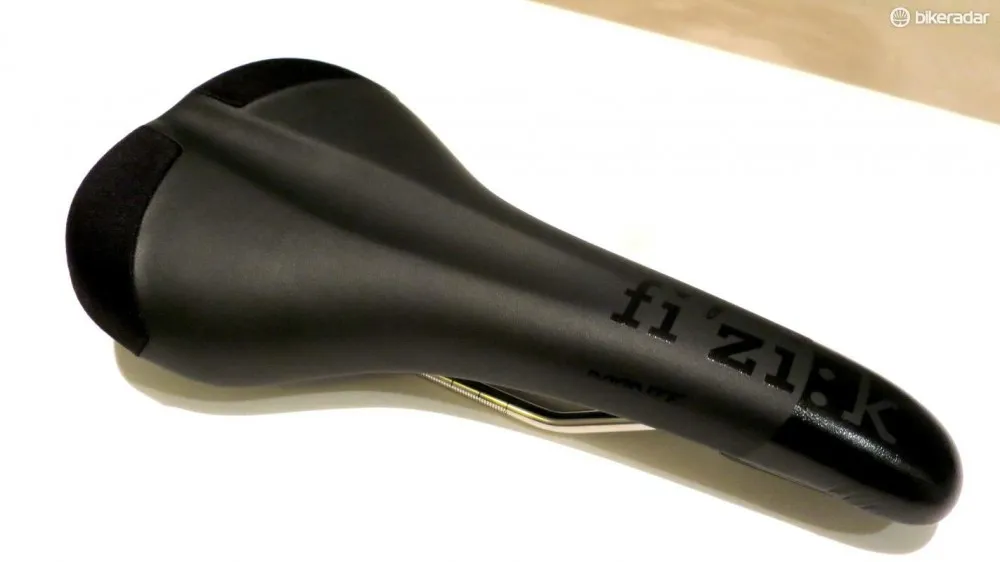
The rails are replaceable, with 25g lighter carbon rails available. The rail design offers a lengthy 90mm of adjustment too.
The cover is reinforced at the shoulders with tough cordura panels and the Monte will be available in manganese and K:ium versions as standard. Along with a deeper channeled VS version too. The range starts from €99 with US and UK pricing still to be confirmed.
VS and VSX anatomic channels smoothed out
The VS and VSX line of relief-channel saddles now account for about 30% of all of sales, the company says.
For 2016, the new VS uses a lighter padding foam with a higher level of elasticity. This makes the saddle less likely to collapse and shift under the rider’s weight, according to Fizik.
The channel’s edges are now more rounded with a smoother transition designed to eliminate any pressure points.
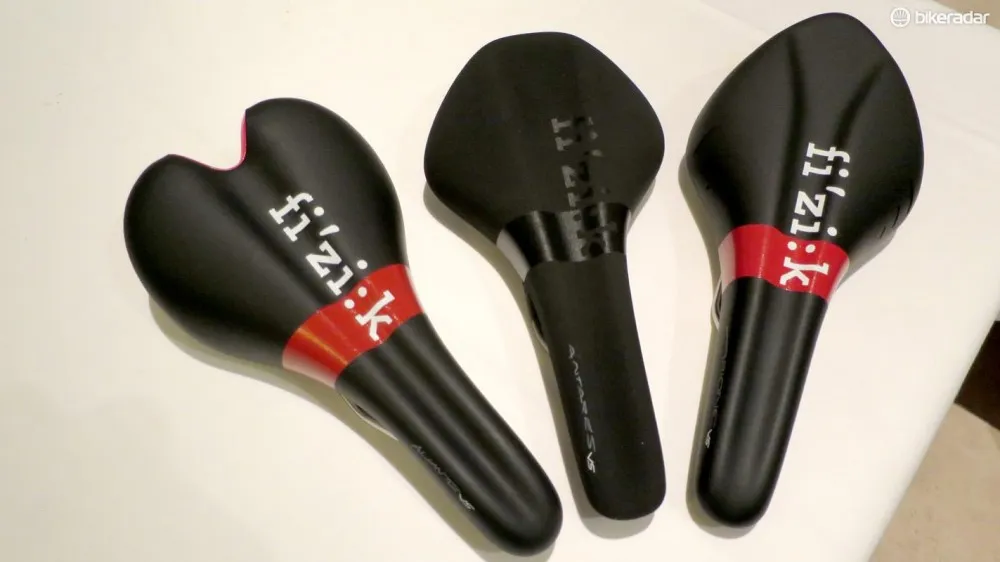
The VSX design has a much deeper channel, now 20mm deep, with similar changes in curved edges and elasticity as the VS.
Both VS and VSX ranges incorporate the Aliante, Arione, and Antares shapes and come in both K:ium- and carbon-railed versions. Pricing across the range is also still to be confirmed.
Check out more news from Eurobike at our Eurobike homepage.
